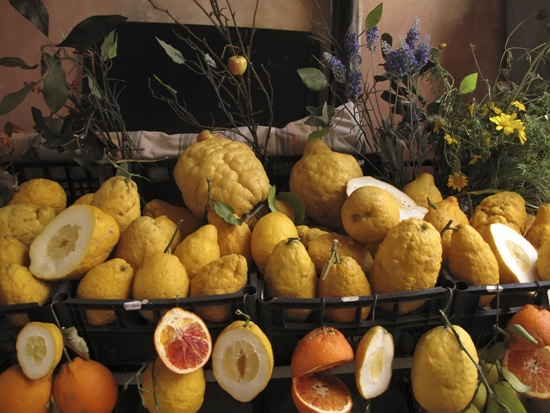
by Maureen | May 25, 2011 | Design, Featured Articles, Food!, Incredible Locations, Journal, Photos, Quips, Shopping & Markets, Sicily, South Italy Tour, Taormina
On a narrow, stair-stepped passage in the “centro storico” – historic district – of Taormina, there was a small shop that sets up fruits and vegetables outside. The lemons pulled me, looking like seventeenth-century Old Masters’ paintings. Some fruit was cut and drying at the edges, more thick-of-skin than there was flesh. Some was left corpulent and uncut.

.
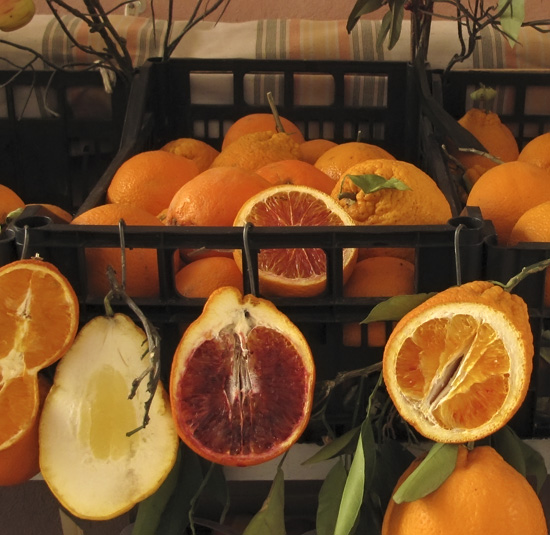
.
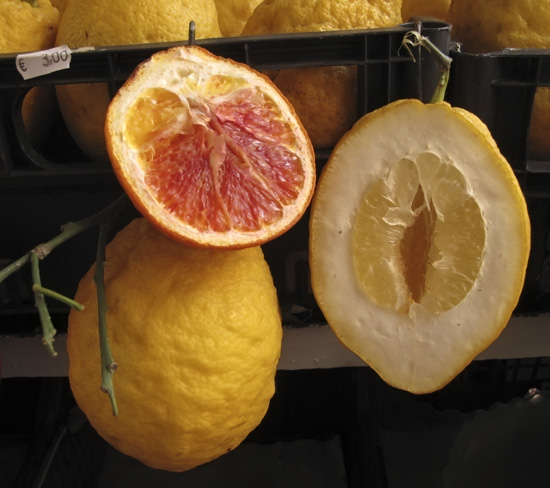
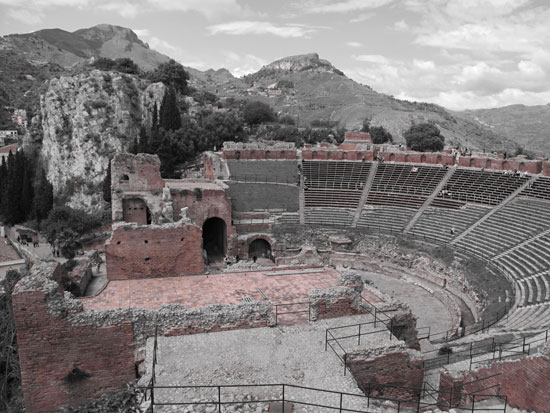
by Maureen | May 10, 2011 | Discoveries, Incredible Locations, Journal, Photos, Sicily, South Italy Tour, Taormina
It’s the layering of history, so pervasive throughout Italy, that stuns me every time I make a turn and come upon some incredible, very old site/sight. It usually leaves me speechless.
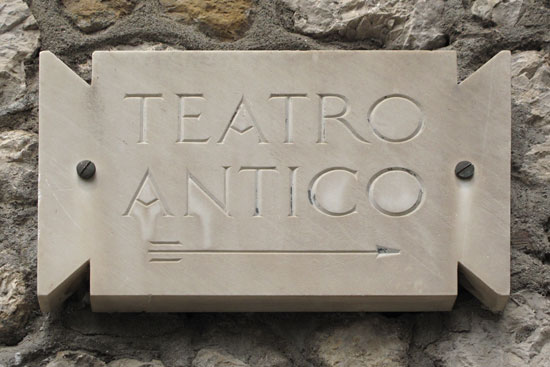
From Wikipedia entry:
“The Ancient Theatre of Taormina (“Teatro Antico di Taormina” in italian language) is an ancient greek theatre, in Taormina, southern Italy, built early in the seventh century BC.
“The most remarkable monument remaining at Taormina is the ancient theatre (the teatro greco, or “Greek theatre”), which is one of the most celebrated ruins in Sicily, on account both of its remarkable preservation and of the surpassing beauty of its situation. It is built for the most part of brick, and is therefore probably of Roman date, though the plan and arrangement are in accordance with those of Greek, rather than Roman, theatres; whence it is supposed that the present structure was rebuilt upon the foundations of an older theatre of the Greek period.
“With a diameter of 120 metres (after an expansion in the 2nd century), this theatre is the second largest of its kind in Sicily (after that of Syracuse); it is frequently used for operatic and theatrical performances and for concerts. The greater part of the original seats have disappeared, but the wall which surrounded the whole cavea is preserved, and the proscenium with the back wall of the scena and its appendages, of which only traces remain in most ancient theatres, are here preserved in singular integrity, and contribute much to the picturesque effect, as well as to the interest, of the ruin. From the fragments of architectural decorations still extant we learn that it was of the Corinthian order, and richly ornamented. Some portions of a temple are also visible, converted into the church of San Pancrazio, but the edifice is of small size.”
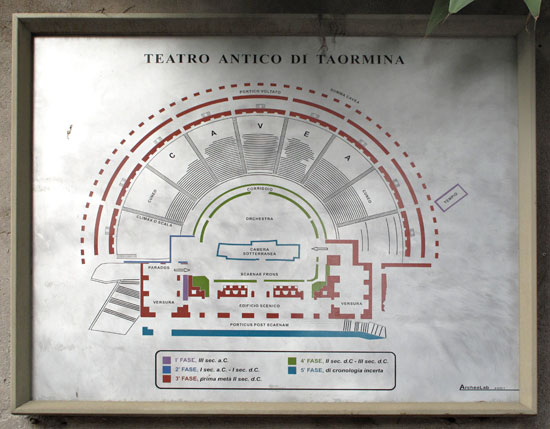
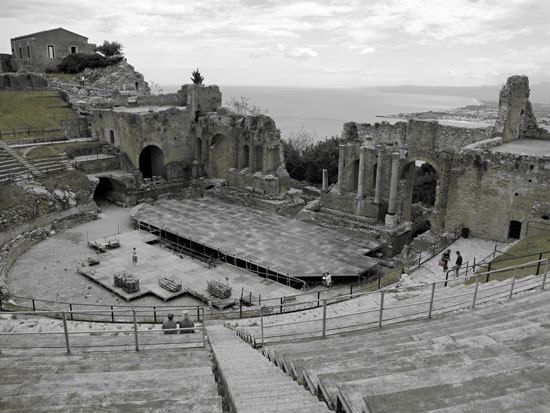
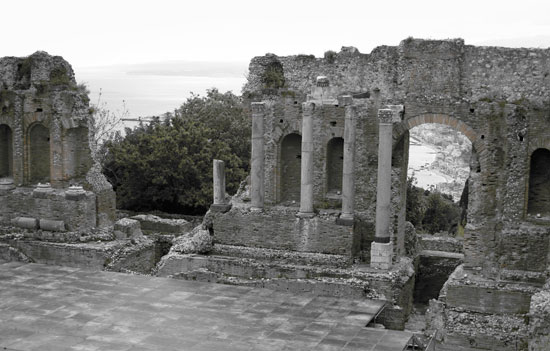
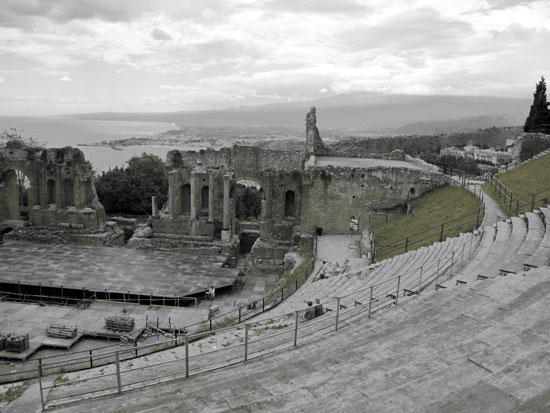
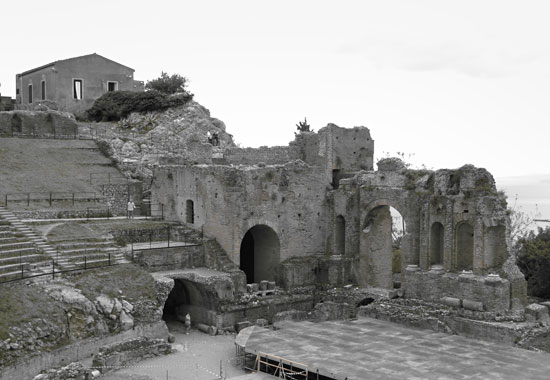
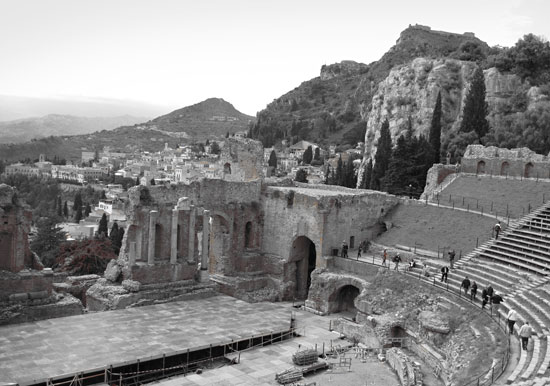

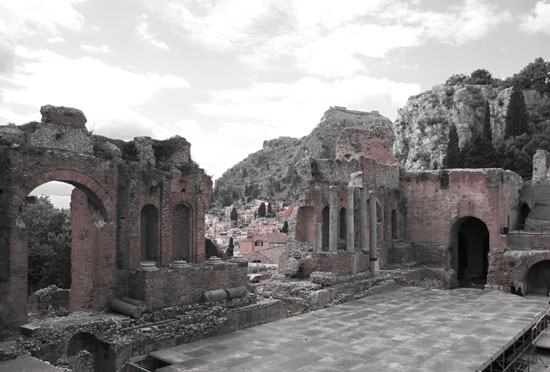
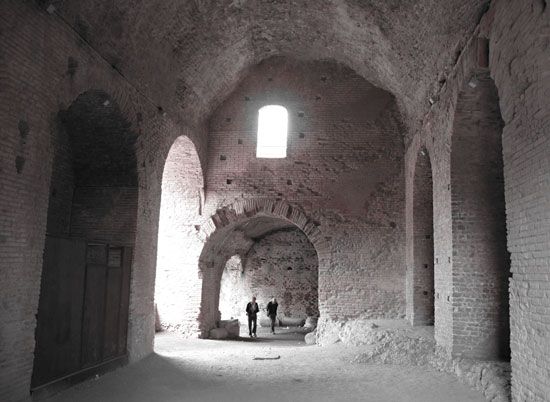
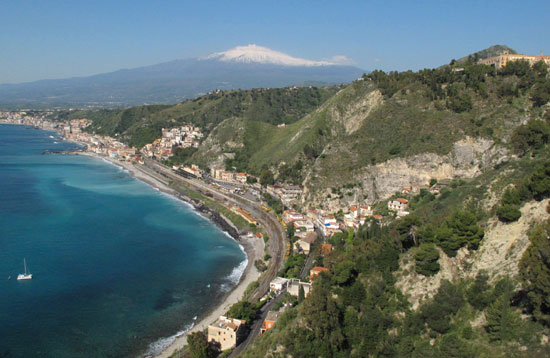
by Maureen | May 10, 2011 | Discoveries, Incredible Locations, Journal, Photos, Sicily, South Italy Tour, Taormina
Along the eastern shore of the large island of Sicily, south of Messina, in view of Mt. Etna to the west, lies Taormina high above the shore of the Ionian Sea. It offers ancient Greek history and contemporary souvenir shopping. Mediaeval stone buildings and current luxuries. Whether one walks behind the tour groups along the heavily-trod Corso Umberto, or takes off into the hidden back walkways, Taormina covers the range. In this town, I found a different polish than in Cefalú, and certainly Palermo.

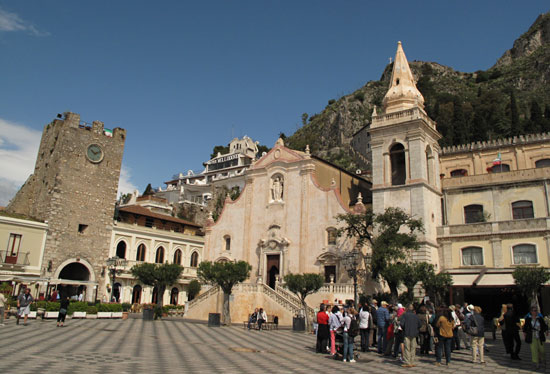
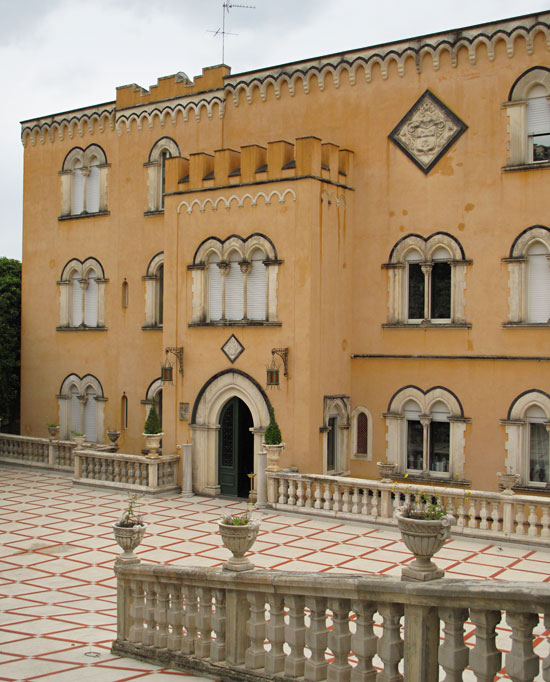
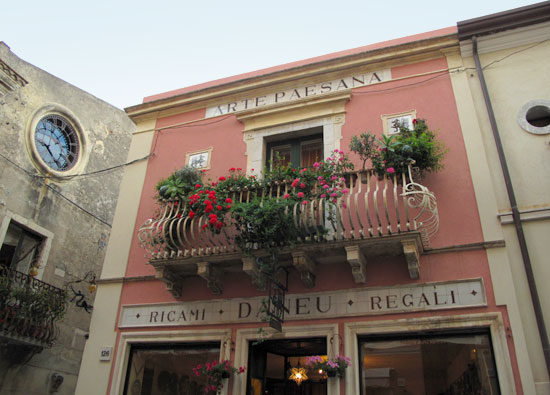
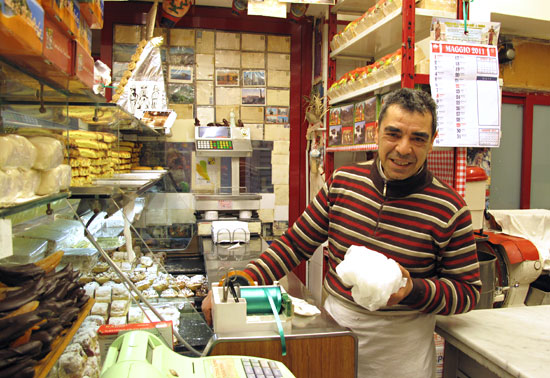
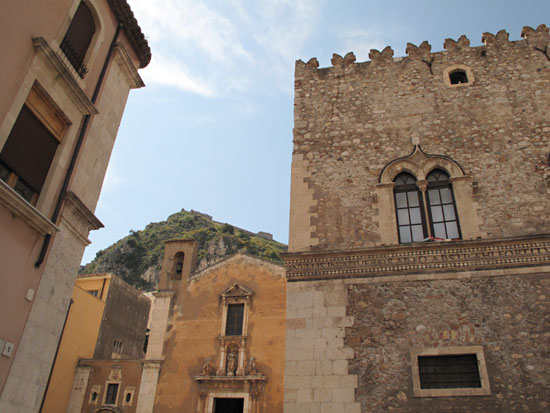
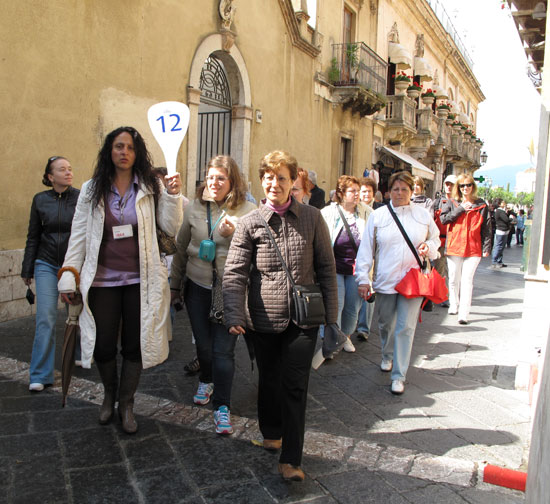
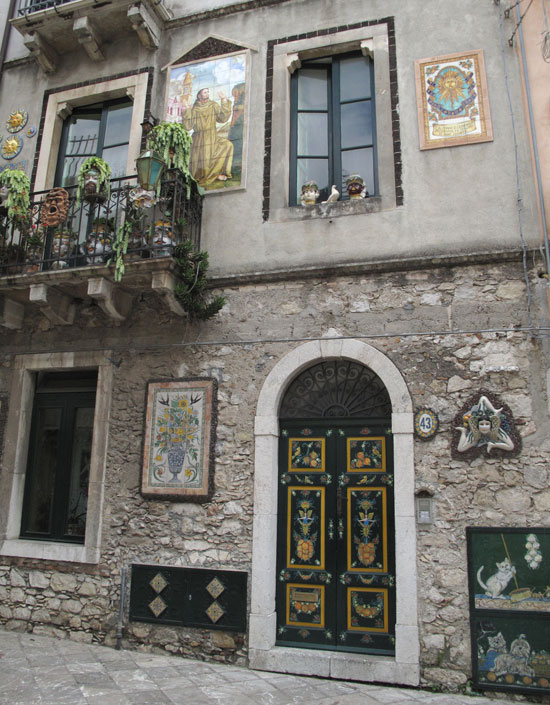
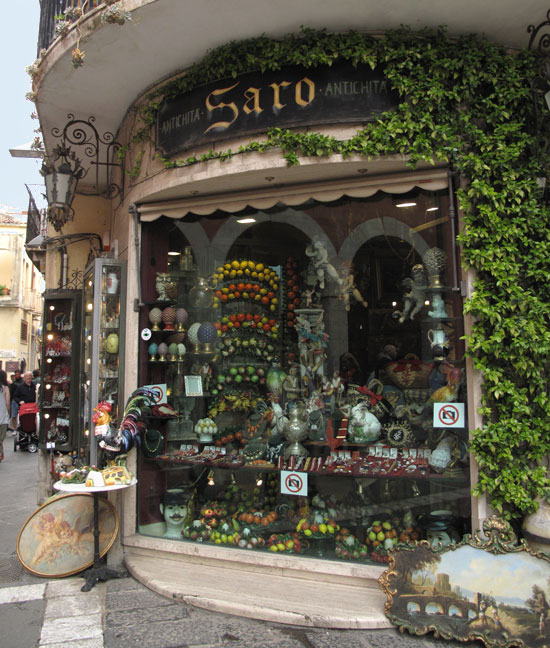
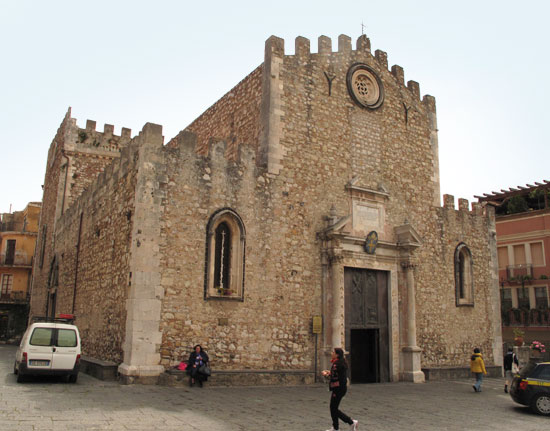
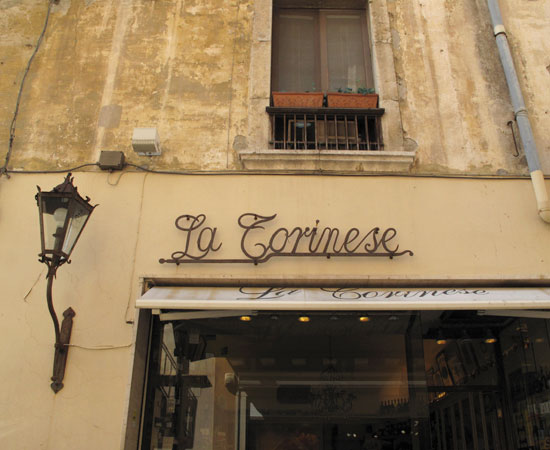
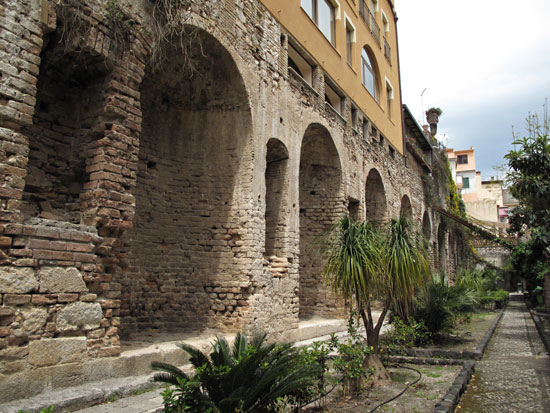
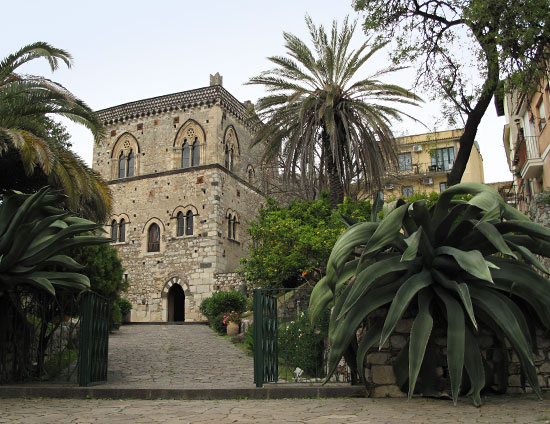
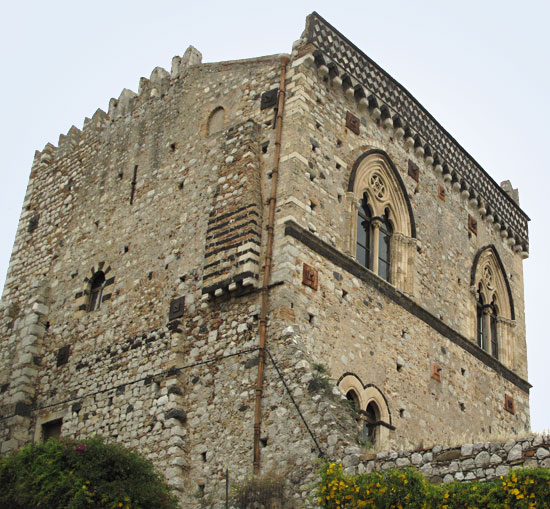
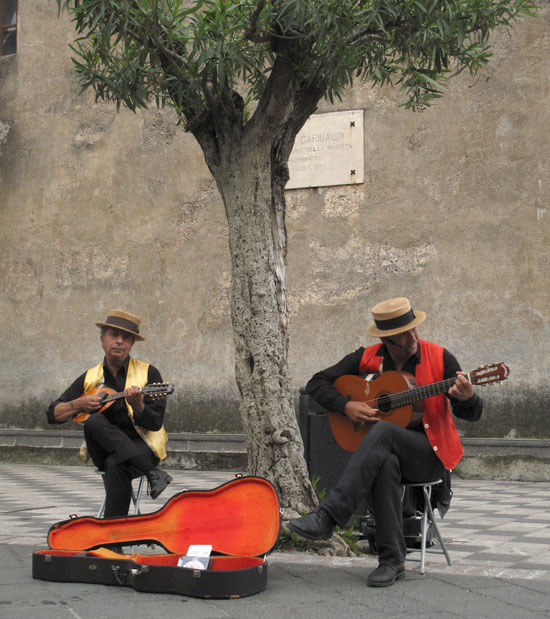
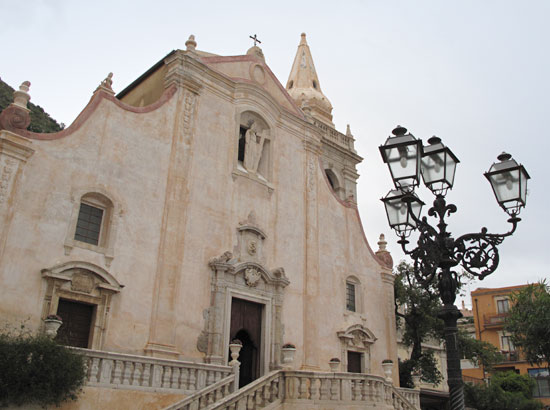
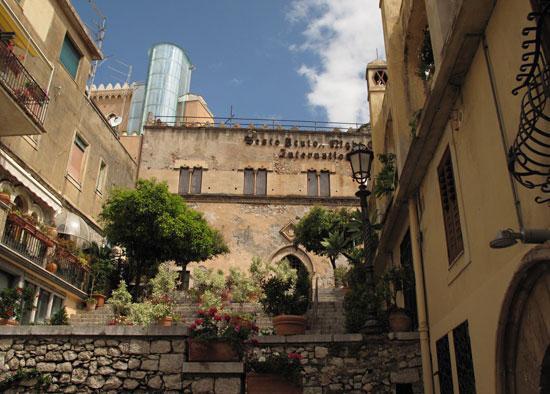
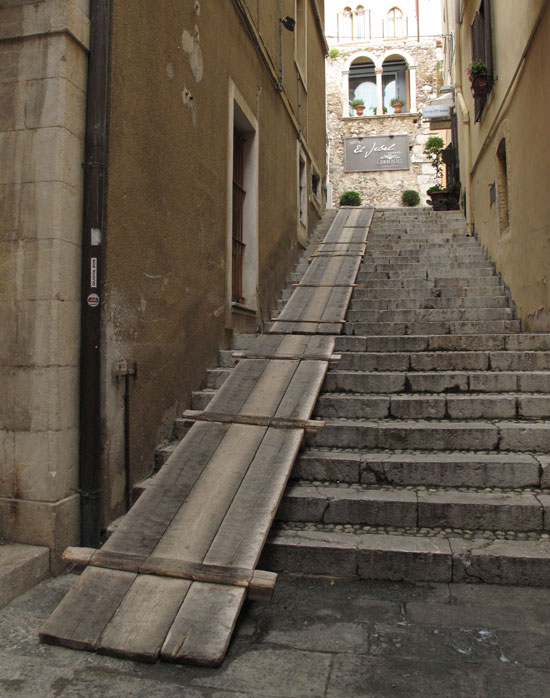
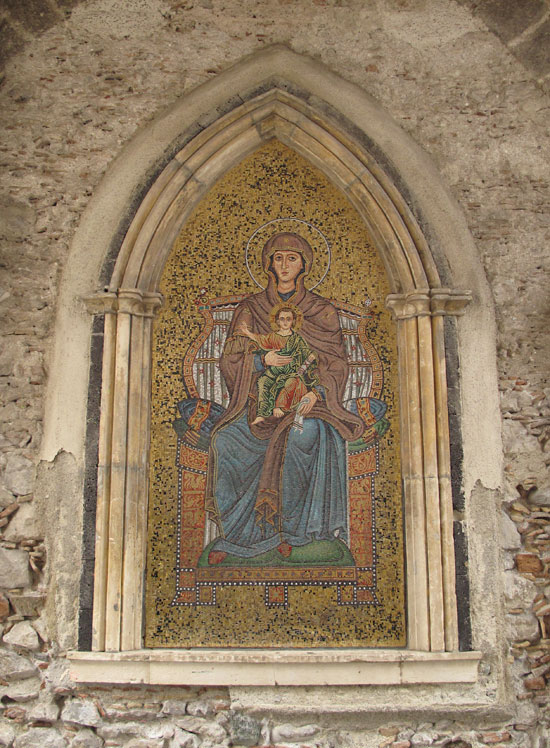
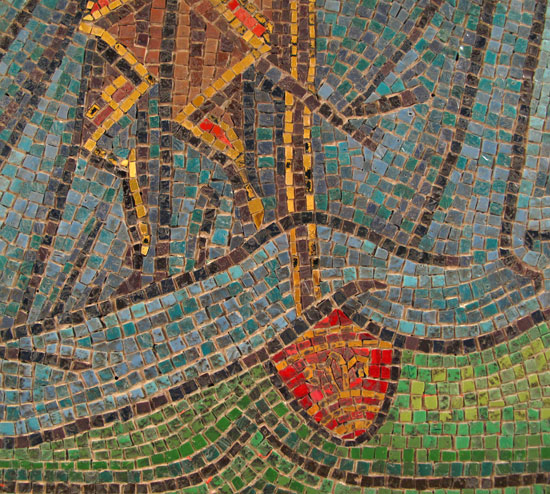
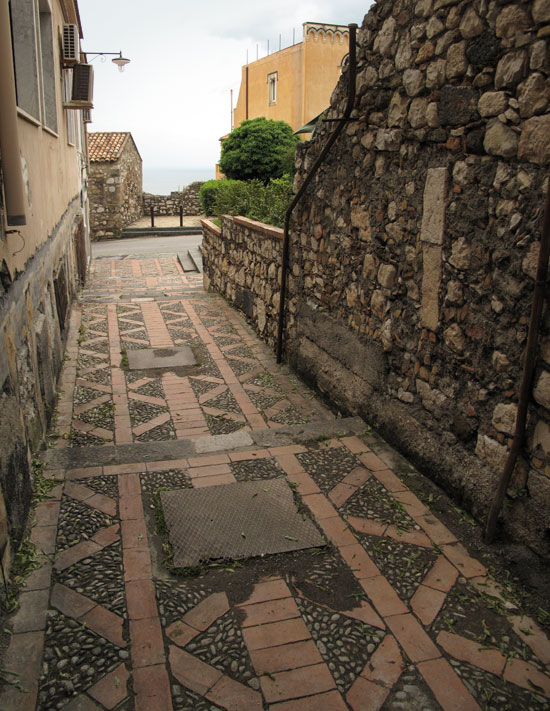
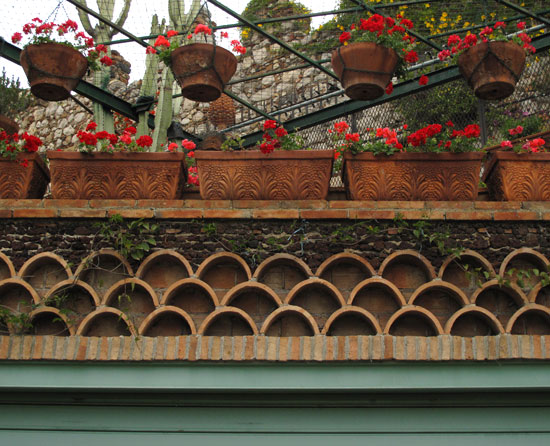
by Maureen | May 10, 2011 | Journal, Quips, Sicily, South Italy Tour, Taormina
Sitting in a hotel lobby using the wifi network. Italian game show on the TV next to me. Don McClean singing “American Pie” on the sound system. I hear more American Pop music here than Italian, both oldies and contemporary. It always amuses me, but doesn’t introduce me to Italy’s sounds.
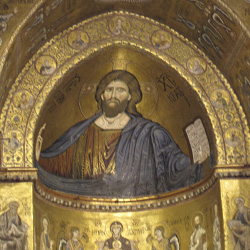
by Maureen | May 10, 2011 | Church, Incredible Locations, Journal, Monreale, Photos, Sicily, South Italy Tour
Hardly a long drive as-the-crow-flies from Palermo, but a long time through traffic, Monreale is southwest from Palermo, and is worth the trip whether flying-like-a-crow or driving. The gold mosaic duomo interior will make your jaw drop. The bakery staff in town will make you want to stay at least a week laughing and chatting. The town streets will charm you. Ahh… Go.
– – –
From Wikipedia:
“The Cathedral of Monreale is one of the greatest extant examples of Norman architecture in the world. It was begun in 1174 byWilliam II, and in 1182 the church, dedicated to the Assumption of the Virgin Mary, was, by a bull of Pope Lucius III, elevated to the rank of a metropolitan cathedral. The church is a national monument of Italy and one of the most important attractions of Sicily.”
From the front, the Duomo doesn’t give you much of a hint of what’s inside…
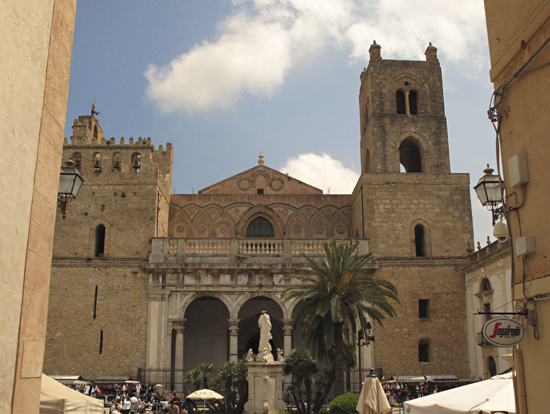
…but step inside, to the gold mosaic interior, and you’ll pick your jaw up off the floor.
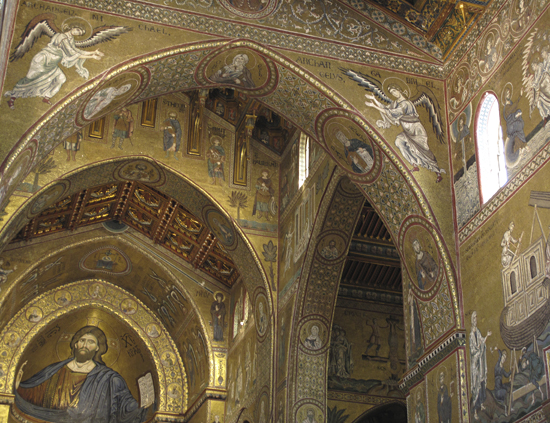
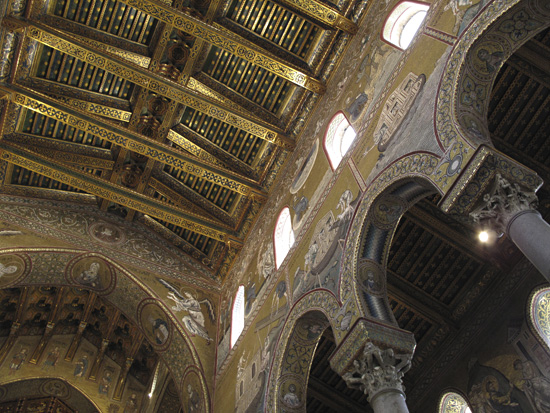
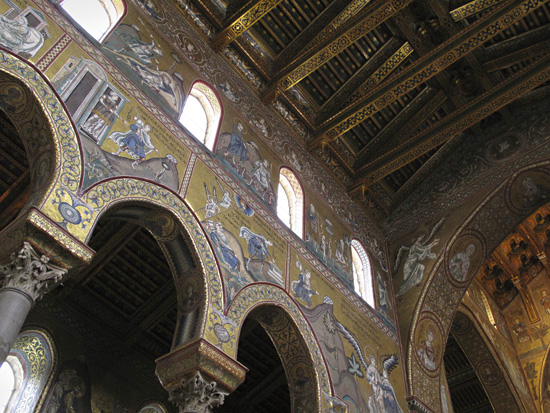
These little mosaic pieces are about 1/4″ to 3/8″ or so across. Imagine the whole interior surface of this church (and others) being covered like this!
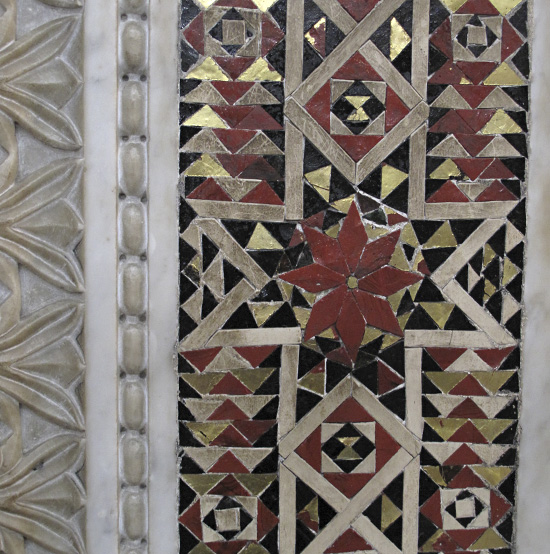
One of the several floral bouquets inside was almost a mosaic in itself.
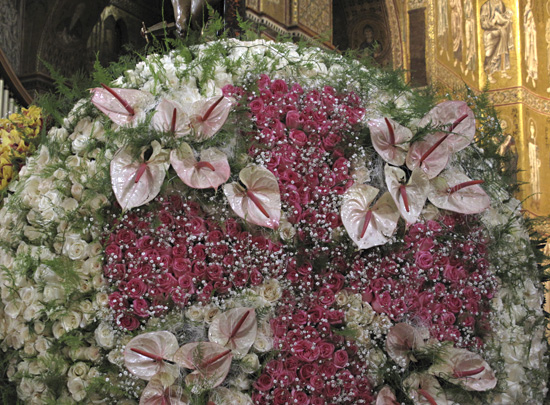
The backside of the Duomo and its monastic building, on a little side street, are richly embellished!
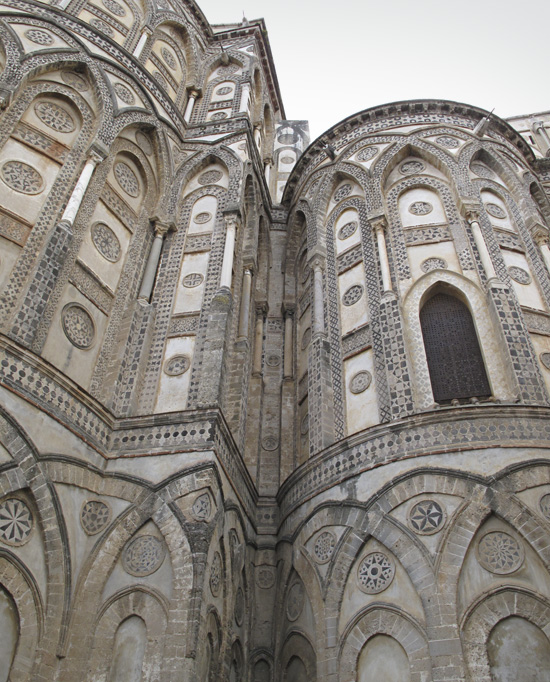
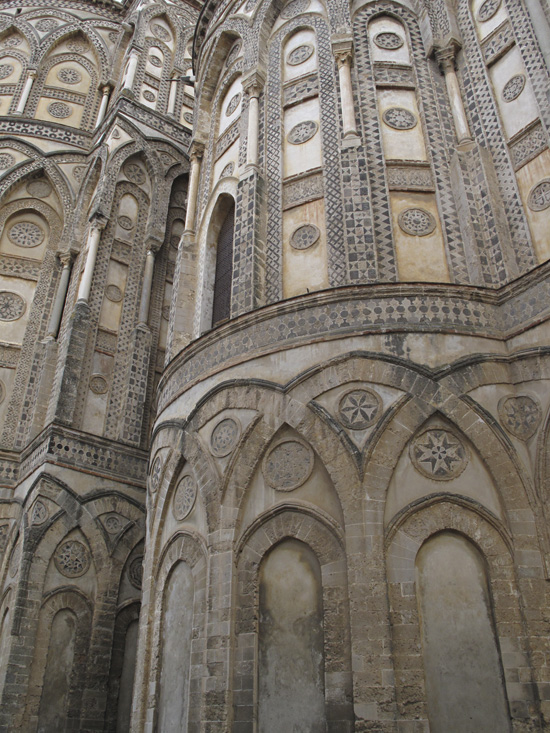
“The archiepiscopal palace and monastic buildings on the south side were of great size and magnificence, and were surrounded by a massive precinct wall, crowned at intervals by twelve towers. This has been mostly rebuilt, and but little now remains except ruins of some of the towers, a great part of the monks’ dormitory and frater, and the splendid cloister, completed about 1200.”
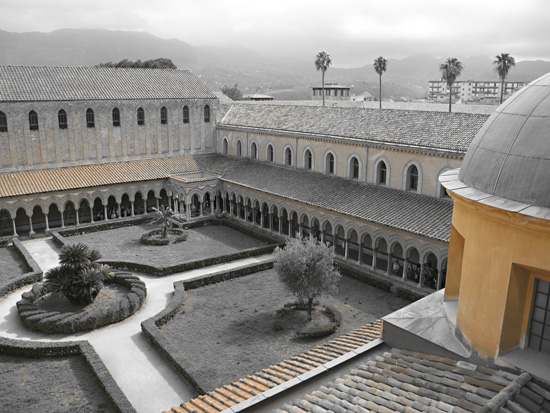
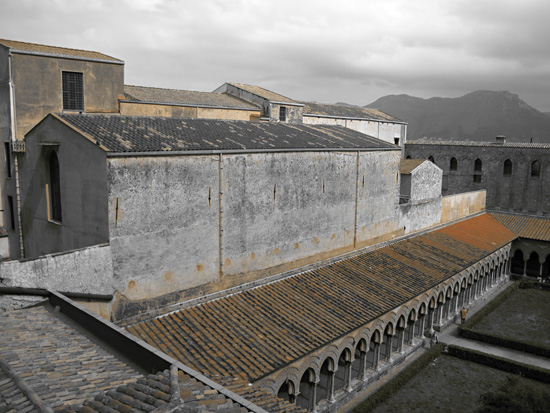
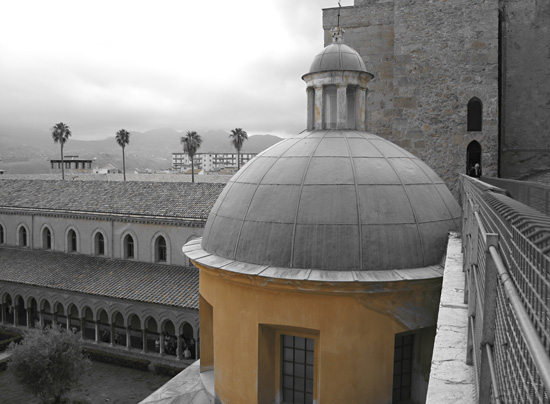
In any city, find a highpoint for the greatest overview. In Italian cities, that often means climbing the narrow stone staircases to the top of the duomo. Some cathedrals have elevators, but the old worn stairs and walls are worth seeing, if you can make the climb.
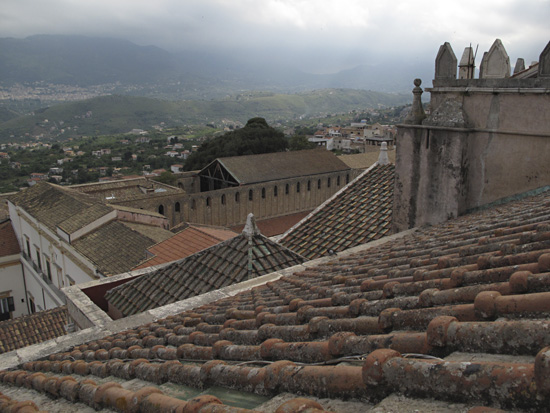
Looking out over the rooftops, Palermo is in the distance at the shoreline.
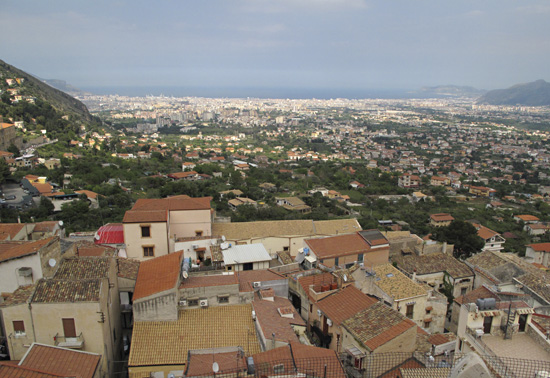
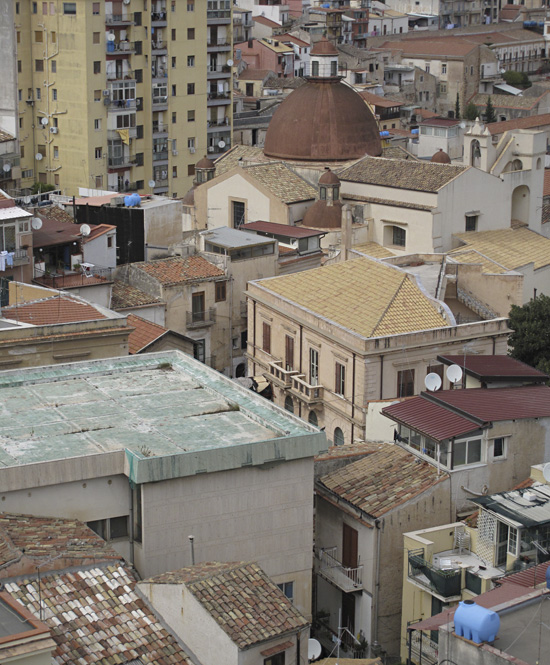
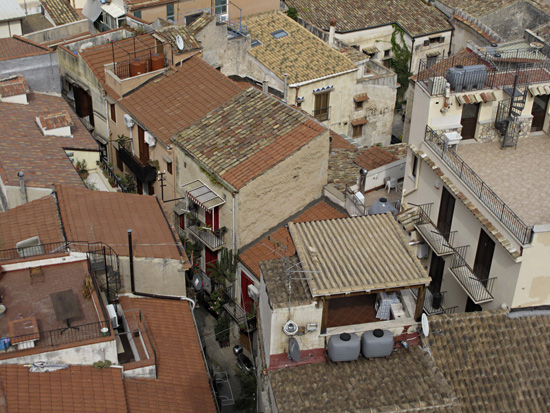
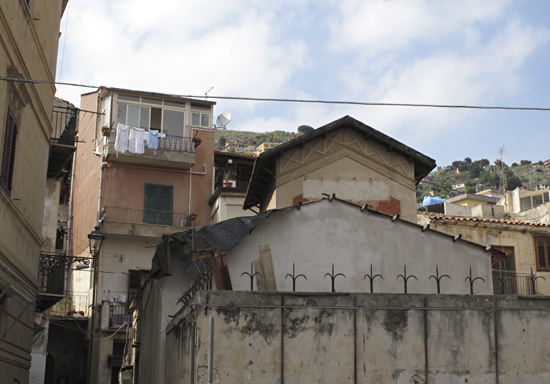
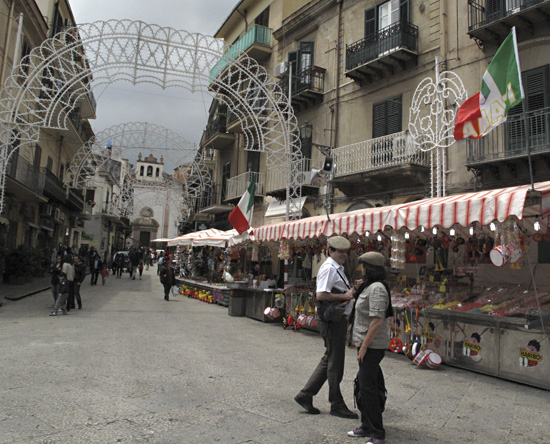
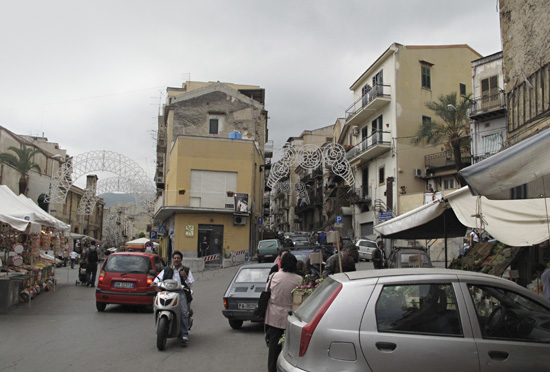
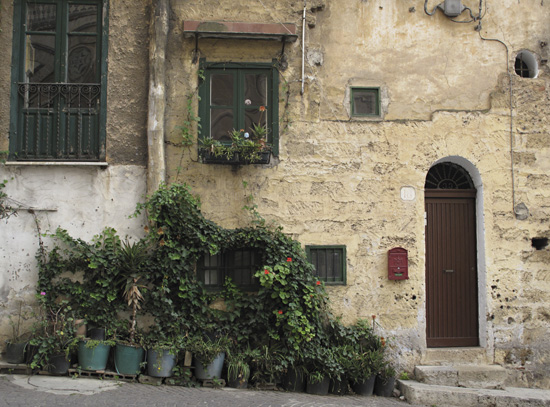
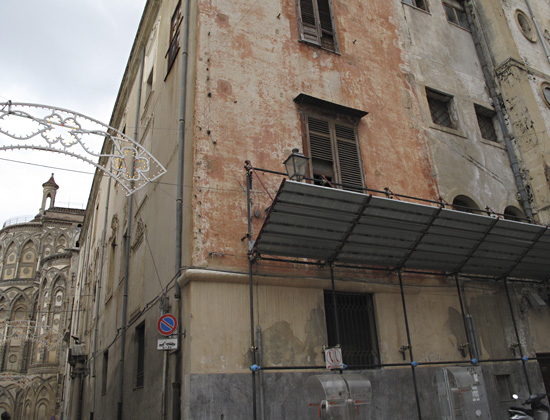
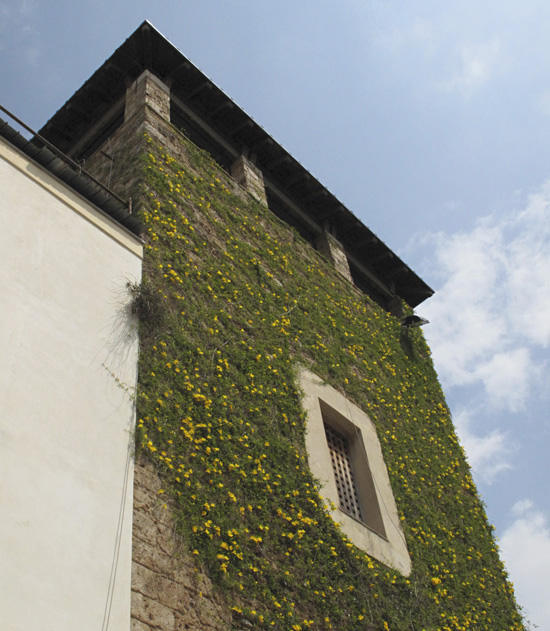
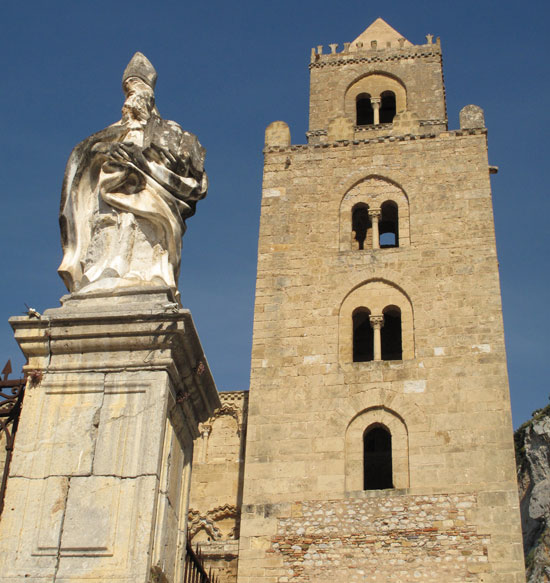
by Maureen | May 10, 2011 | Cefalù, Incredible Locations, Introspection, Journal, Quips, Sicily, South Italy Tour
8 May – In the “centro storico” – historic center – of this little seacoast town east of Palermo, on the north shore of the island of Sicily. The narrow, climbing, maze-like streets remind me of the towns of the Cinque Terre, rooted into the spaces at the bases of their hills. Navigation must come of childhood exploration. How could one possibly give directions home?
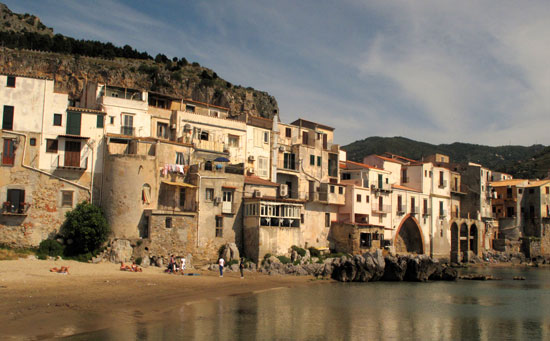
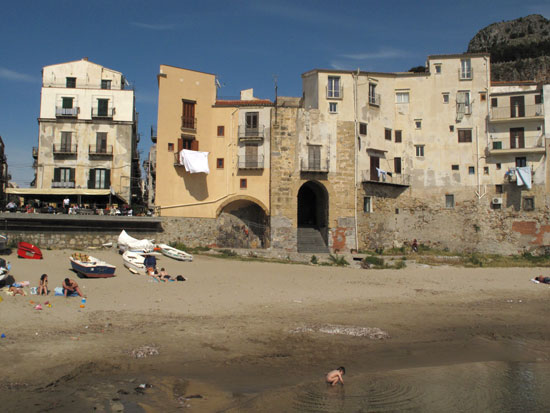
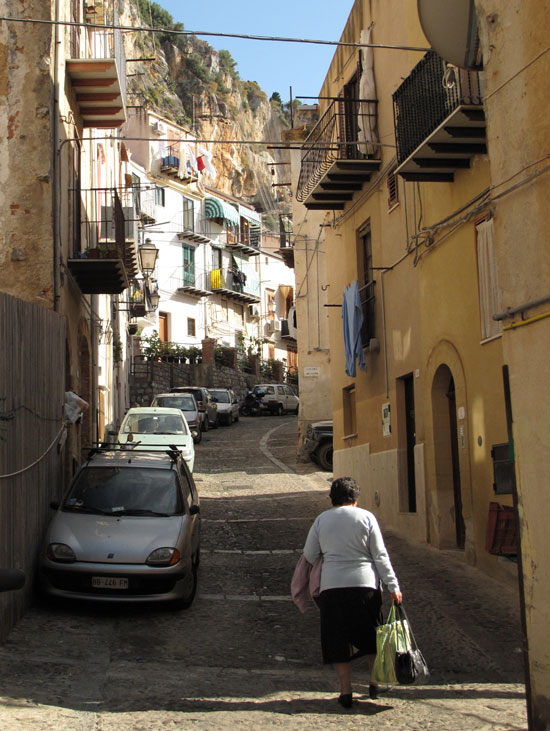
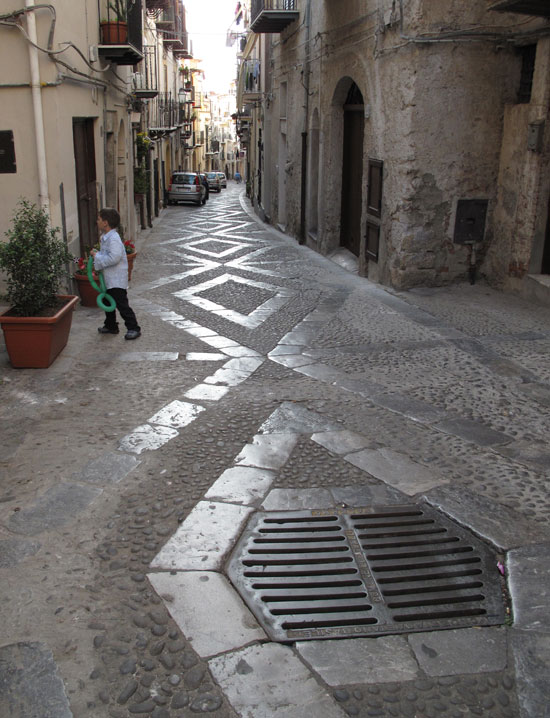
Cefalù is FULL of tourists: elderly Europeans speaking German, French, Danish… some Italian. They are here in crowds with cameras. How can I find myself bristle when I, too, am a tourist? But I want to get away from them and the shops selling knick-knacks, and see the atypical sight. I lose myself on the side streets. Go to the hill tops that require a healthful youth the elders lack. I take the “roads less traveled” and marvel that they never stray from the most-worn path. As in Venice, get off the main drag and find solitude and visual treasures.
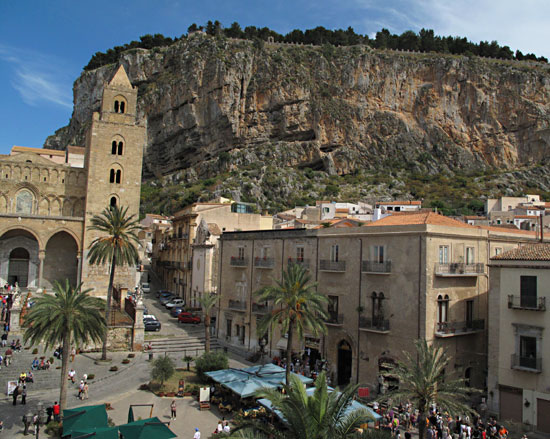

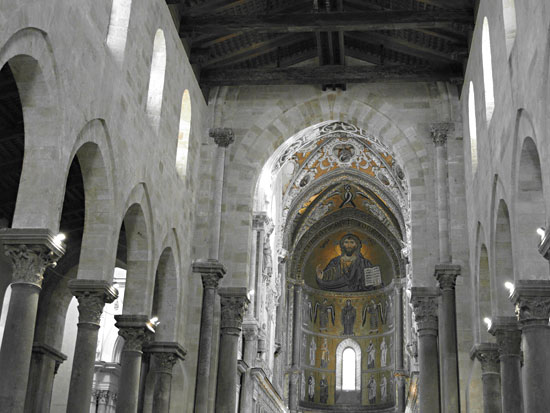
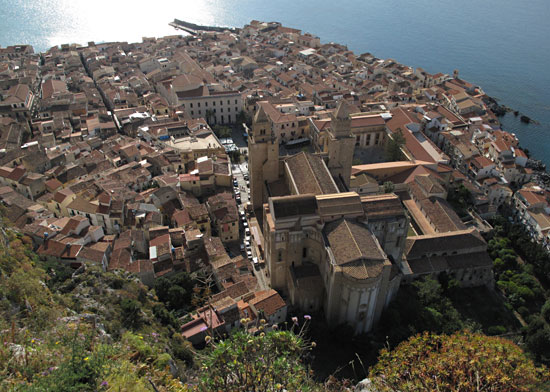
– – –
9 May – I had the absolute noisiest B&B room imaginable in Cefalù (Hotel Villelmi). Granted, I had a little balcony and access to a rooftop terrace that looked right out to the Piazza del Duomo and “La Rocca”. But the rowdy crowd of tourists and locals expressively chattered late into the night. Then, early in the morning, 4:00 or 5:00, workers used every sort of process or equipment to clean that piazza. Pressure-washers, mini street sweepers, manual laborers. And the recycling trucks came to pick up the 1000s of wine bottles emptied the day before. The bottle bins were right outside my window.
And as much as I like spring birdsong, I have never heard such loud and sleep-preventing birds as those this morning! And then, at 7:00, the duomo bells chimed 1, 2, 3, 4, 5, 6, 7, 8, 9, 10, 11, 12 times, 3 repetitions of this in rapid succession, as if to say “get up, get moving, get out now!”
Hmmm. Proximity to a Piazza del Duomo is not such a great idea.
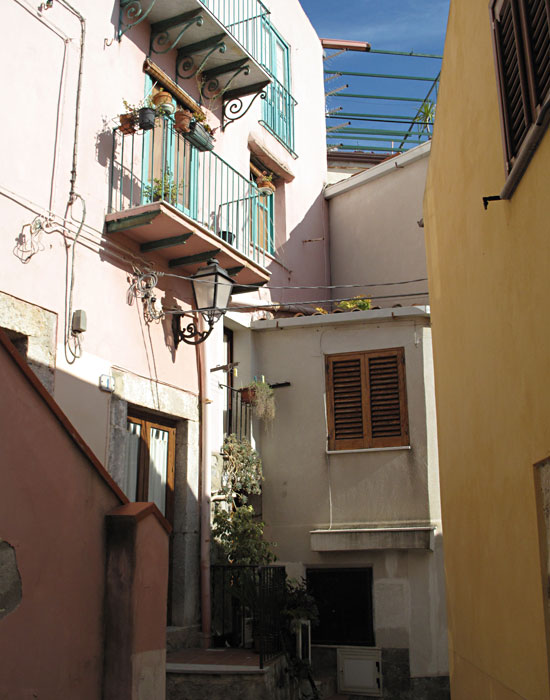
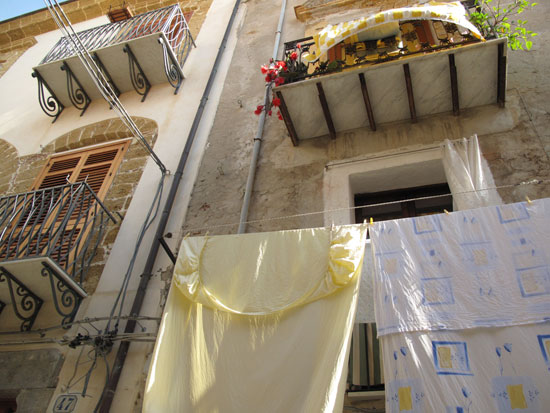
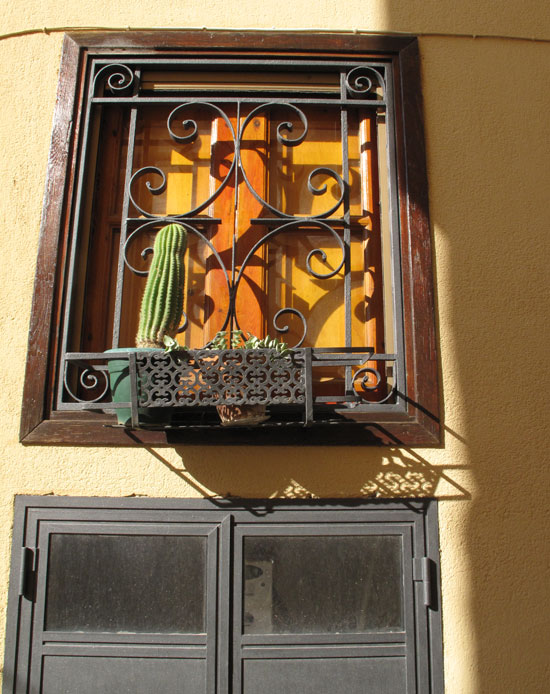
– – –
9 May – I’m traveling the regional train along the shoreline toward Taormina: “the straights of Messina” at my left! The straights are something I’ve always heard of, but I have no recollection of what I’ve heard. I’ll have to look them up.
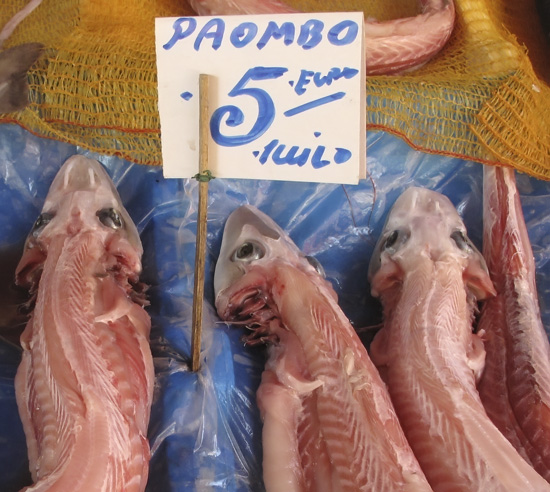
by Maureen | May 10, 2011 | Incredible Locations, Journal, Palermo, Photos, Shopping & Markets, Sicily, South Italy Tour
Palermo is renowned for its old street markets, some of which have been in the same spot as early as the 10th century! As far as I know, each one is open every day (except Sunday). Some vendors have enclosed shop spaces. Others set up and take down every day.
La Vucciría – the most famous food market in the city.
Ballaró – the oldest food market in the city.
Casa Professa – selling second hand goods, new and used clothing, adjoining Ballaró.
Il Capo – selling fruits, vegetables, clothing and shoes. (This market was just a block from my B&B Kemonia.)
Mercato delle Pulci – flea market selling dusty furniture, crystal, porcelain, lamps, frames and tiles.
Lattarini – selling metal goods, tools, clothing and cloth.
– – –
The “Ave Maria” fruit stand, right in front of a niche honoring Mary.
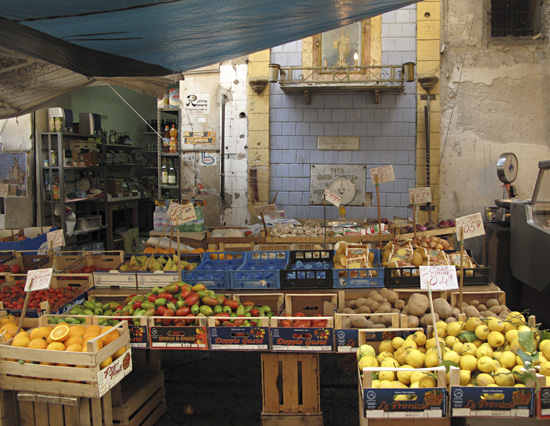
“Aromas” (maybe herbs?) and dried fruit.
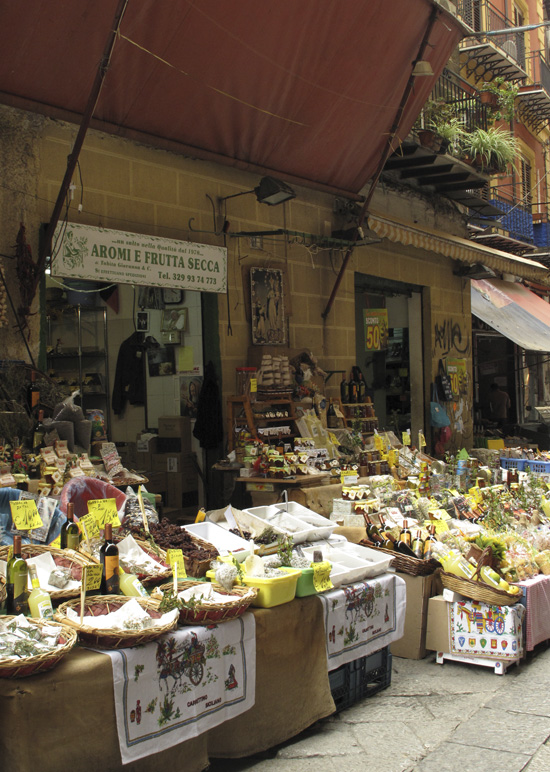
There are more types of artichokes here than I’ve ever seen.
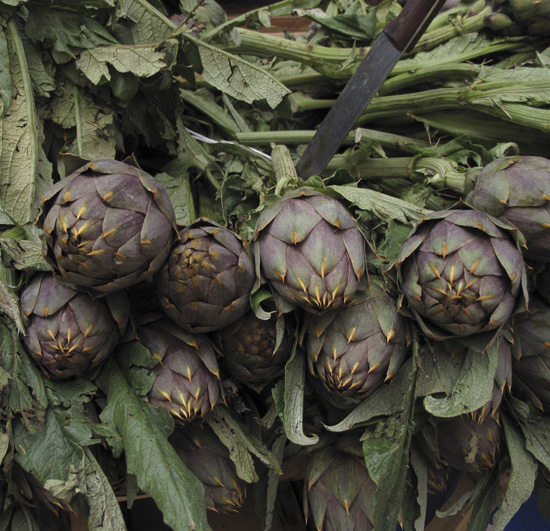
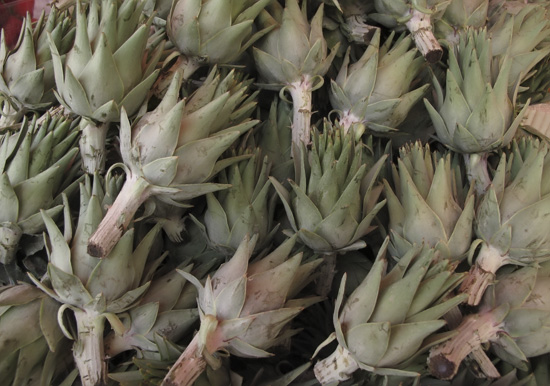
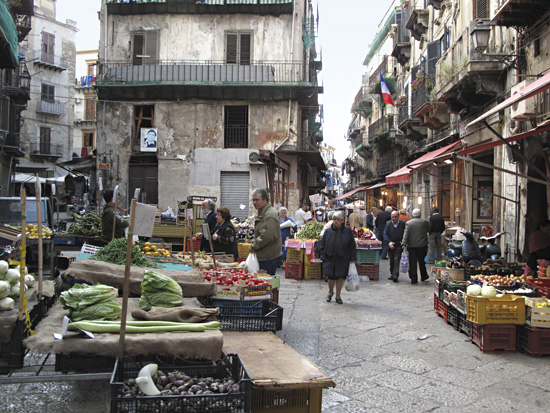
“Frutta e Verdura” = “Fruits and Vegetables”.
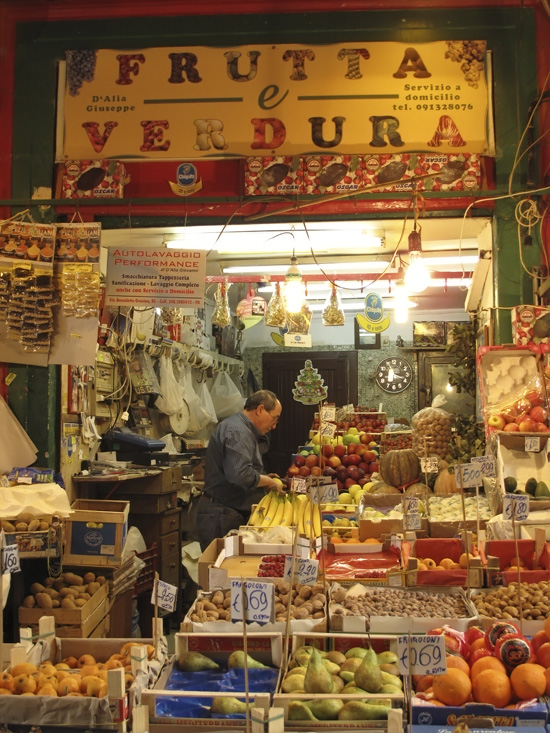
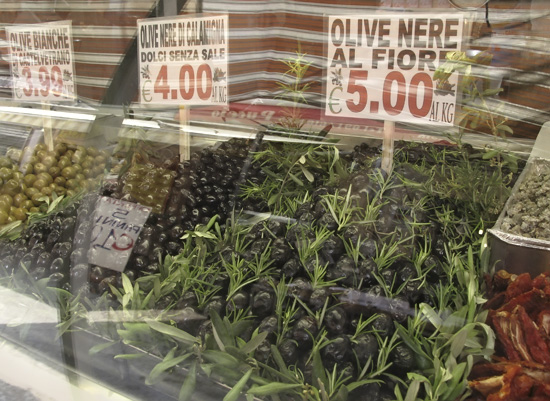
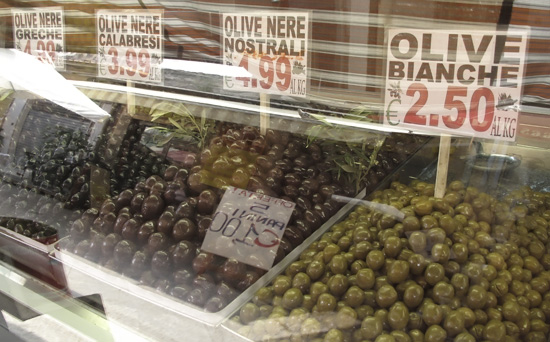
Some vendors sell general housewares, this one in front of the niche honoring Santa Rosalia, the Patron Saint of Palermo.
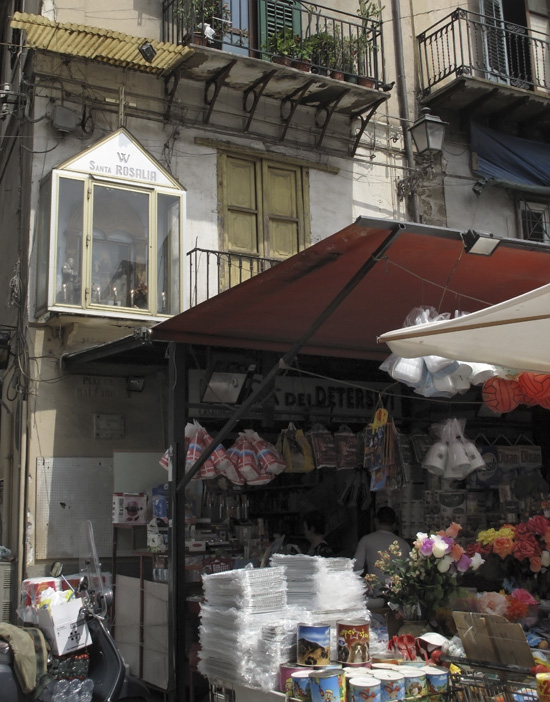
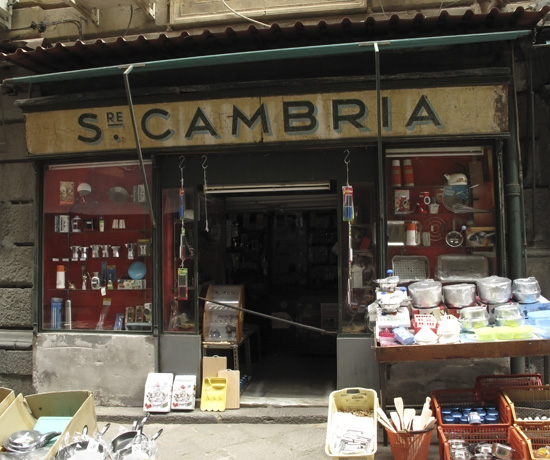
Looks like they’re selling toilet paper, cured meats and sandwiches. Whatever it takes to make a euro.
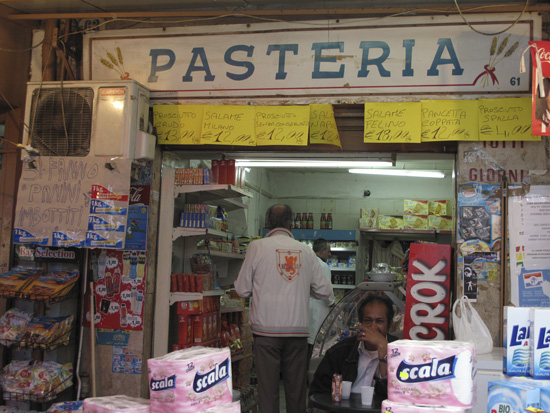
“The Delights of Meat”. A butcher and seller of fresh meats is a “Macelleria”.
A seller of cured meats is a “Salumeria”. The two don’t usually overlap.
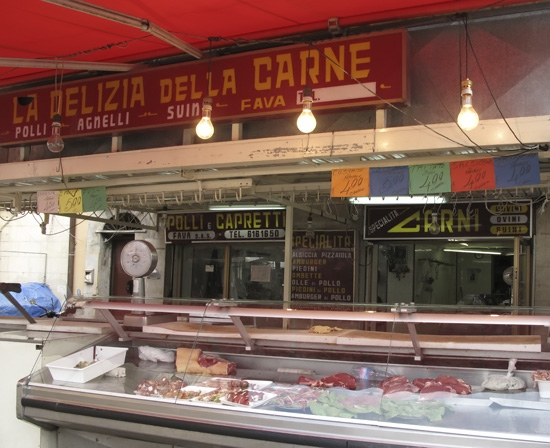
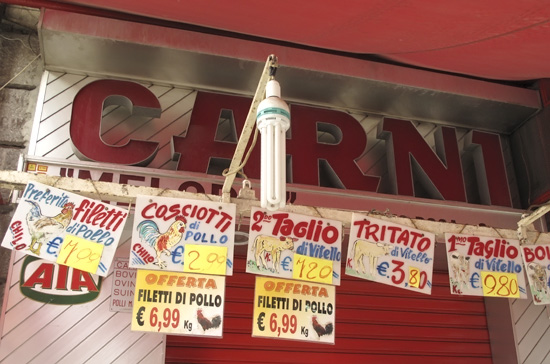
“Fantasies of Meat”.
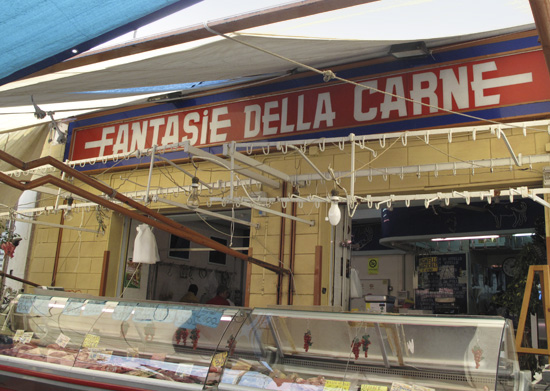
Cheeses and “salumi”, cured meats.
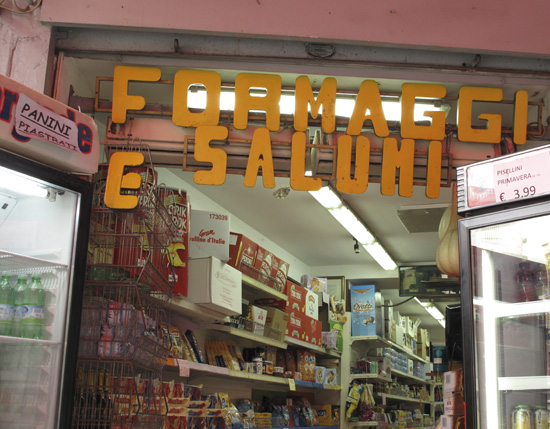
I recognize tripe, veal liver and oxtail. I don’t recognize the organs in the lower right…
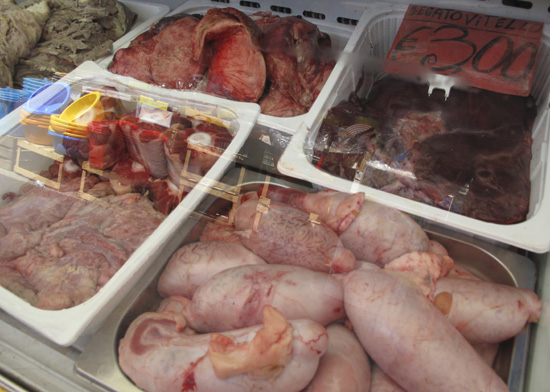
Feet and tripe. (In Firenze – Florence – the tripe is simmered and served up as a sandwich as “Lampredotto“, the regional specialty.
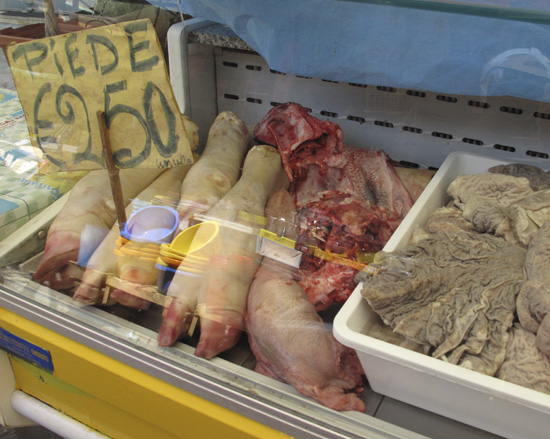
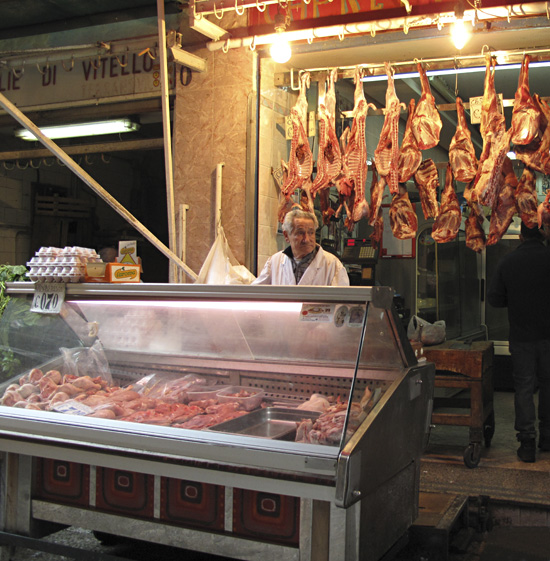
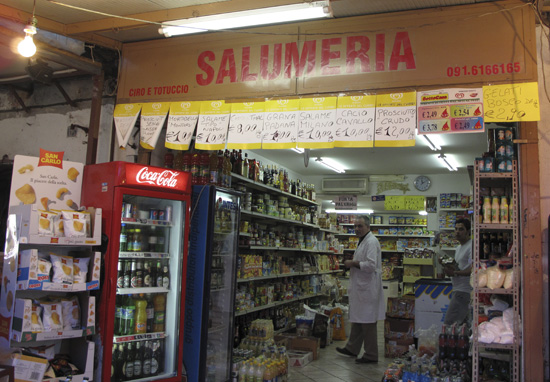
I’ve done a lot of fishing and eaten a lot of fish, but there are fish here that I don’t have a clue about! I don’t know their flavor, their boniness, their best preparation. So… I just buy one and cook it simply the first time to get a sense of it. (But there are some that I don’t have any idea how to begin with.)
Here’s a fishmonger hamming for the camera.
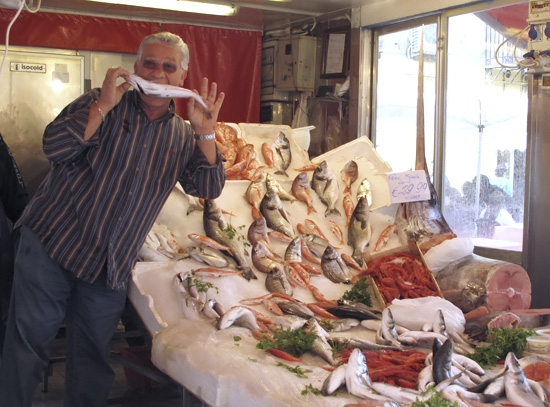
Why is this fish skinned? What’s the meat like? (What was the skin like?)

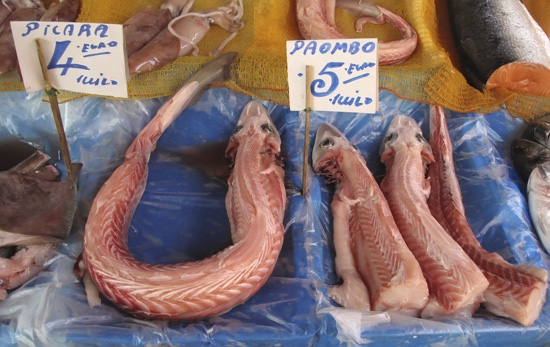
“Babbaluci“, and we’re not talking escargot. Some are getting away!
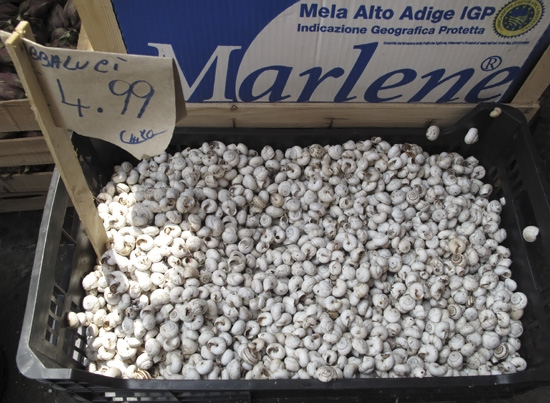
Gambero Rosso – Red Shrimp ONLY from that area. Also served raw (though a little slippery for my taste).
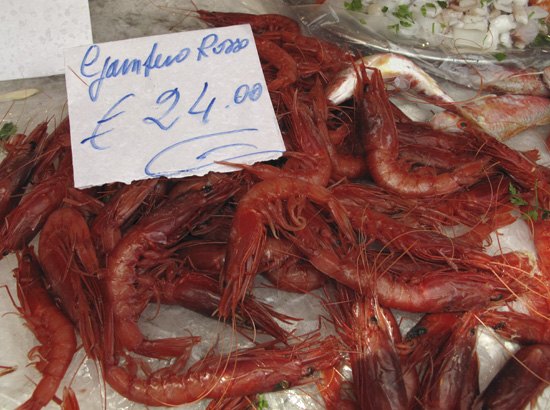
Hmm. The “Sgombro” are sold for both 3 euro per kilo, and 6 euro per kilo! (But the “nostrali” are “our own”).
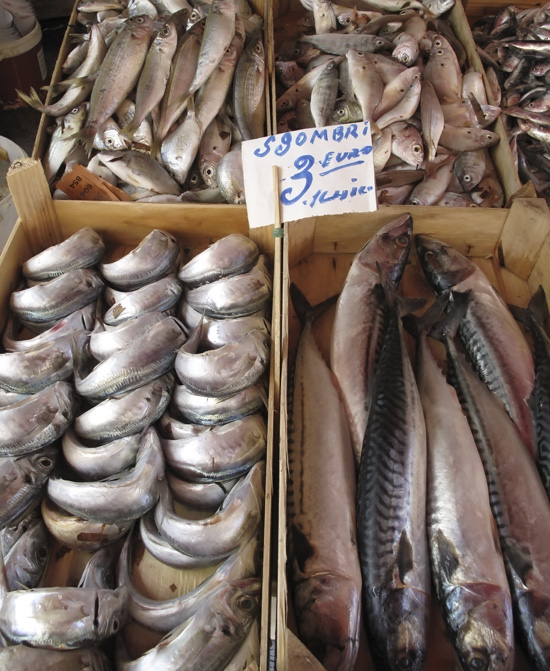
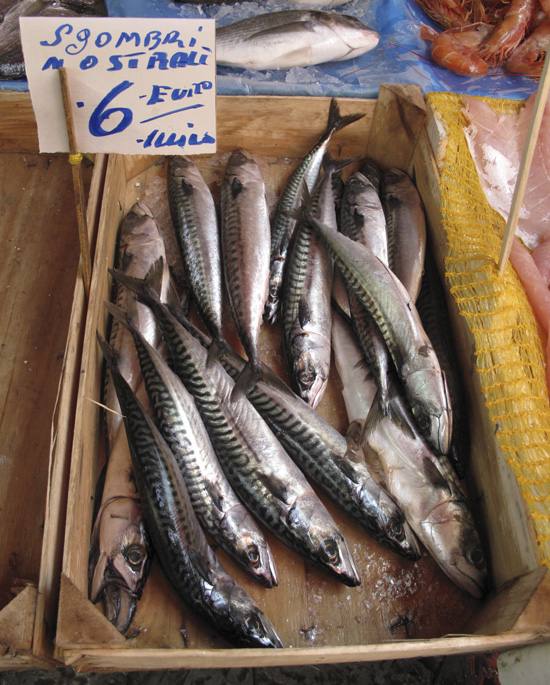
This fishmonger was reaching into his bucket and splashing water onto the fish to keep it moist. He kept posing as a “water-splashing fishmonger”. Note the paper cone in his hand. That’s what they form and package the small fish in. (Fruit vendors do the same thing for small fruit.)
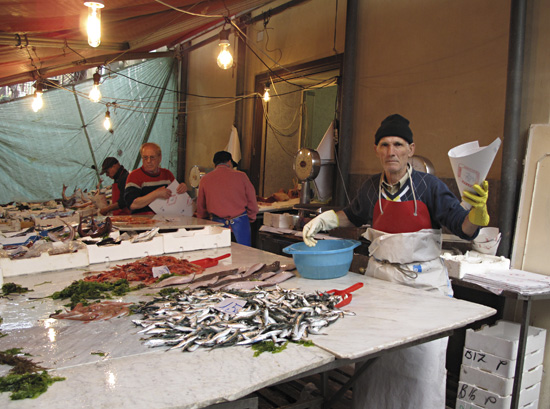
There are more squid and octopus relatives here than I can figure out. The line starts to be blurred for me between one and the other. And they all have names I don’t recognize.
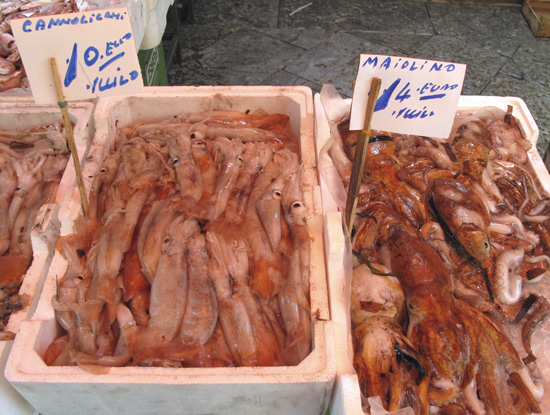
Swordfish – Spada – is very common around here. A great display is always made of the head and sword.
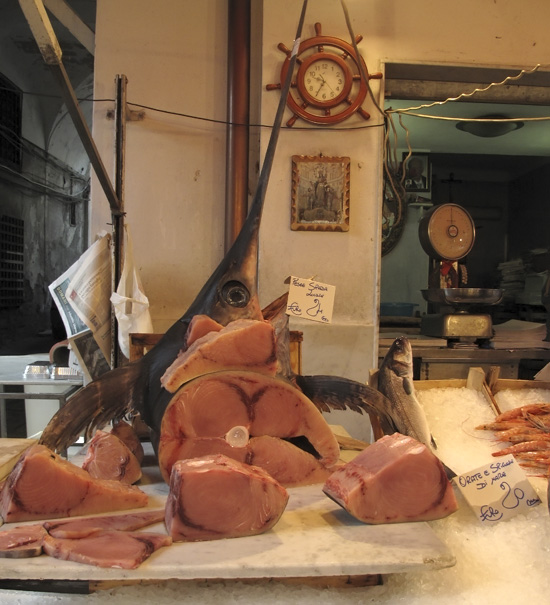
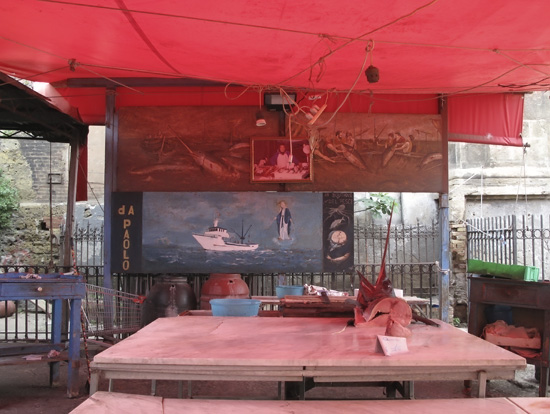
Compare the difference between the swordfish’s pale pink and the tuna’s deep red. One cooks up to white, the other to mid-gray (although served nicely raw).
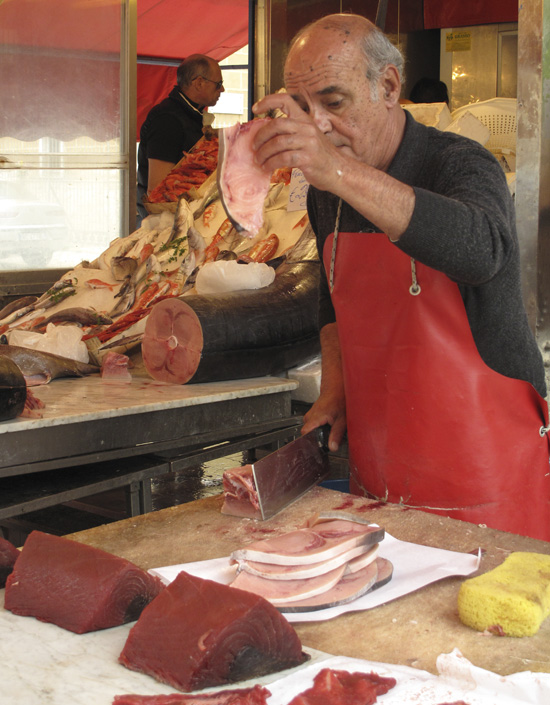
The Mercato delle Pulci caught my eye before I had identified it as the market. (“Pulci” means “fleas”! Flea market!) It’s built of tin and wood shacks encrusted over the years around giant tree trunks. The vendors sell dusty furniture, crystal, porcelain, lamps, frames, tiles and whatever odds and ends they can make a euro off of.
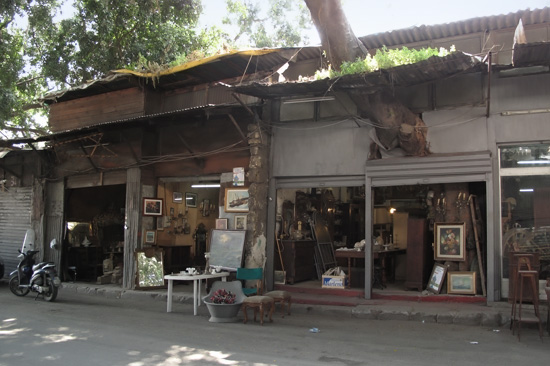
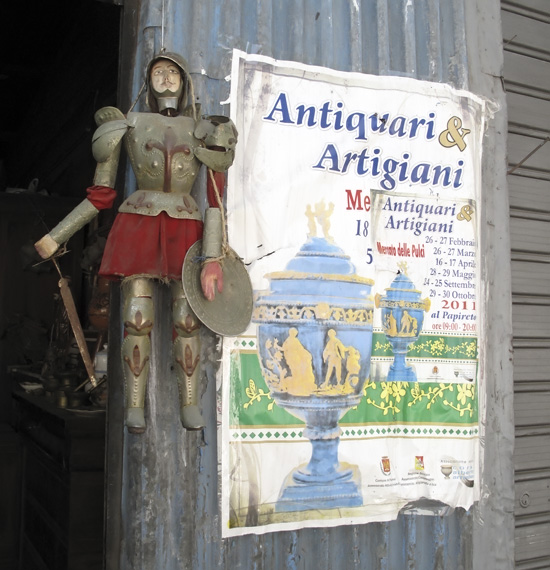
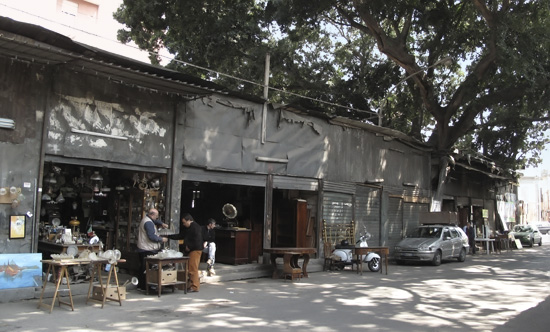
I talked to Bruno in one little space, who gave me a crystal teardrop pendant to carry around as a “porta fortuna” – a “fortune carrier” or good luck charm. It’s riding around in my coin purse now. (Note the tree trunk behind him, in the middle of his shop!)
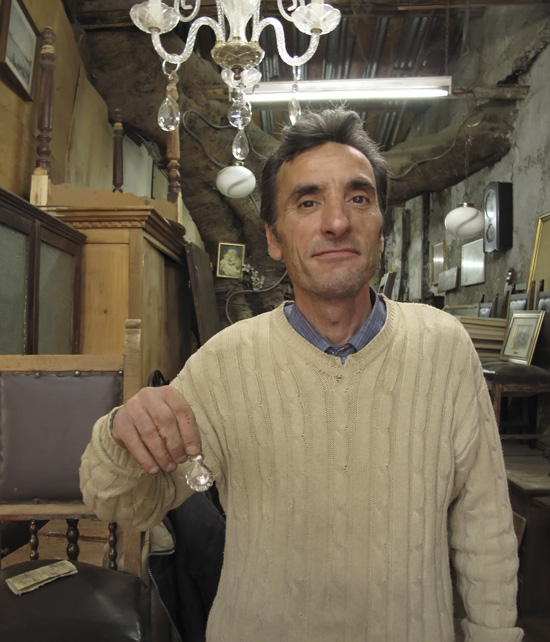
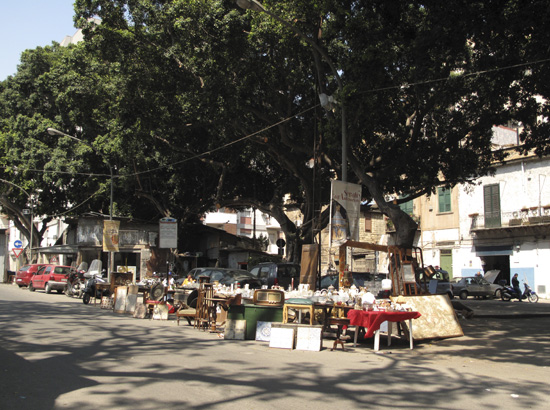
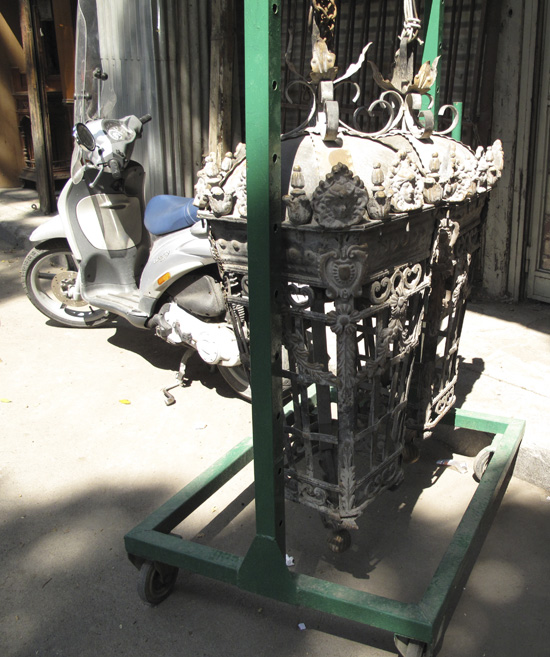
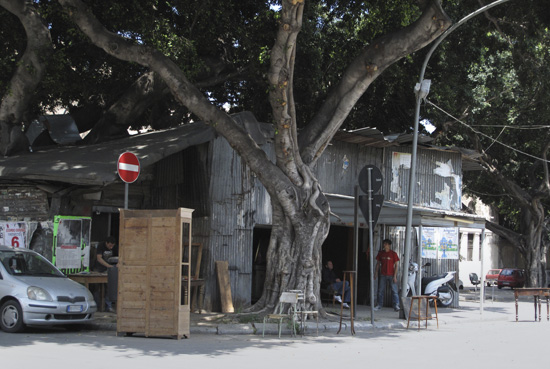
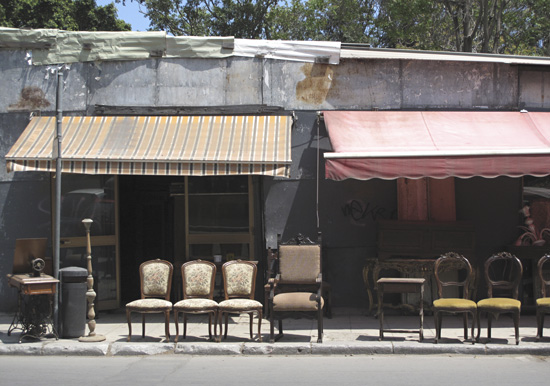
I also enjoyed the tile seller’s shop, with thousands of old maiolica tiles! (How old did he say these are?…)
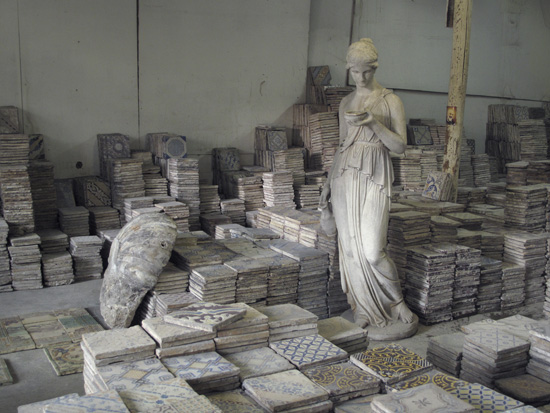
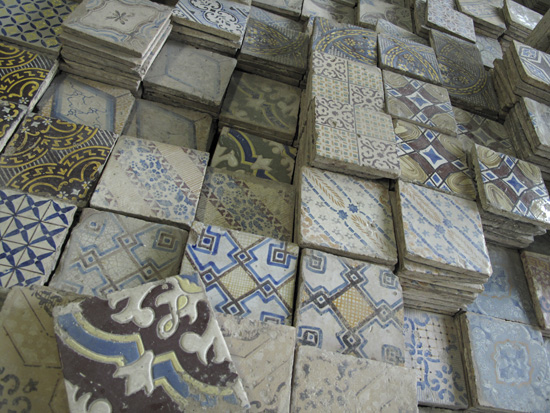
The tiles are so beautiful that I took Richard to Bebbé, the vendor. Richard and his Dad, Peter, were traveling in Sicilia from NYC, and were in Palermo at my B&B. We enjoyed dinners and exploration together. Richard bought four tiles to take home. (Doesn’t he look pleased?!)
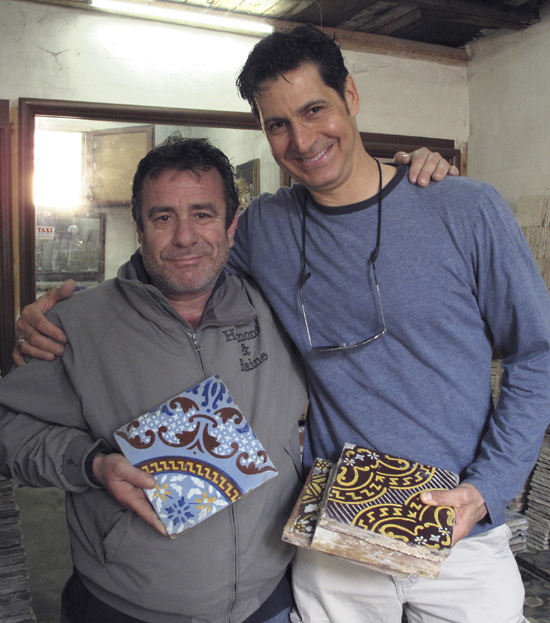
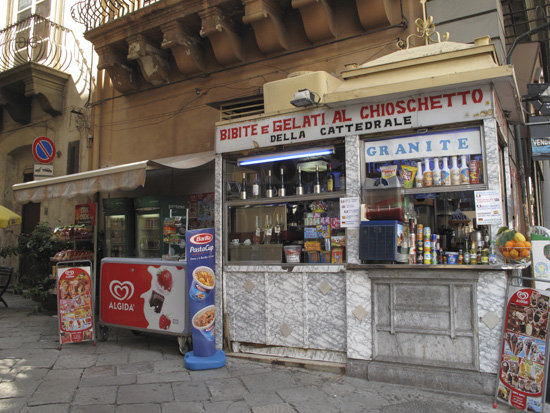
by Maureen | May 10, 2011 | Church, Discoveries, Incredible Locations, Introspection, Journal, Palermo, Photos, Sicily, South Italy Tour
In short, I love Palermo, and look forward another visit. It offers plenty of dazzling sights to wow any visitor. But it remains “unpolished” (to my eye). It is genuine and without pretense, as were the people I was fortunate to chat with.
I traveled in the south of Italy having heard many comments about the stark differences with the north. But I wanted to form my own impression, so I suspended judgement and simply walked, saw, talked and felt the nature of the place.
Palermo is, indeed, “gritty”, and not just because of station construction as I was told. It’s gritty in temperament and surroundings. There are far more half-tumbled-down buildings. Far more disrepair. Is it from a generally lower income? Perhaps. That’s what I’ve heard, but not knowing the stats, I can only guess at that conclusion. Is it from a lack of pride in the Palermitani surroundings? I really doubt that! (And who would I be to come in for a few days and judge that they are lacking in pride?! Ha!)
I really covered territory, on foot, around Palermo! Sure, I followed the main avenues, but I especially walked into small, very local neighborhoods where people were simply going about their days. Tourism was not their efforts’ focus, and therefore, I wasn’t met with the look of boredom or disdain that I found in other cities focused on gleaning travelers’ funds.
And perhaps it’s naiveté, but at no time did I feel my personal safety was in question as a single woman traveling alone. By glancing at some of the areas I entered, one might think they were unsafe places to be. But my radar never sent me any alerts.
Palermo gave me visions that stunned me with history and beauty. It also gave me contrasts, which tell the non-fairy-tale story of the place. Palermo is unscripted and organic and I like the truth of it.
– – –
I had booked the B&B Kemonia for two nights, but within an hour after arriving, I changed it to 4 nights. It was an ideally-situated, very cozy home base, and Riccardo, the owner, was a dear and very helpful with his recommendations. My room, 5 floors up, had a lovely balcony looking out over the city street and the hill beyond.
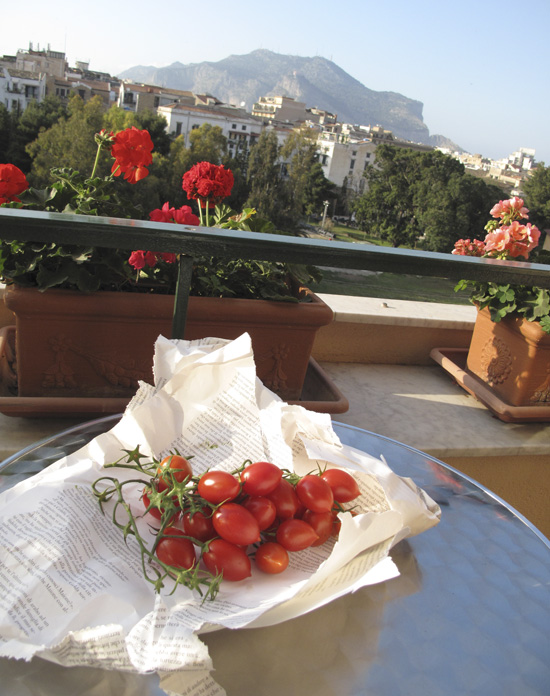
From my balcony, I looked down to the long string of scooters parked in their designated area.
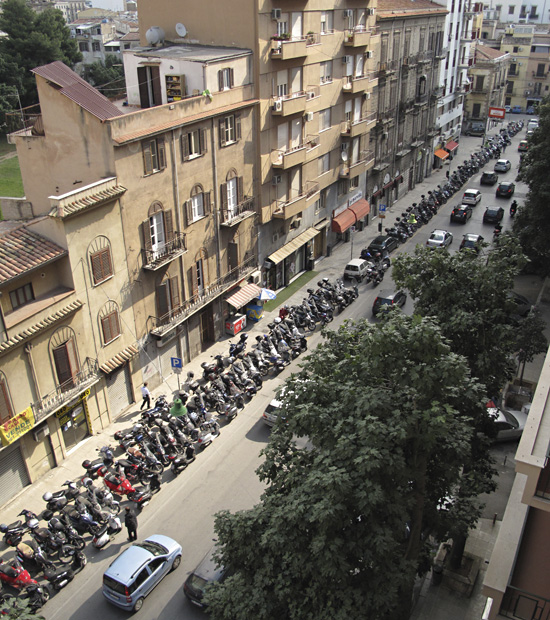
Just down the street from the B&B, close to the large, Capo market, is “The Chicken Boutique. Healthy like a Fish. Beautiful like the sun. Good like bread.”
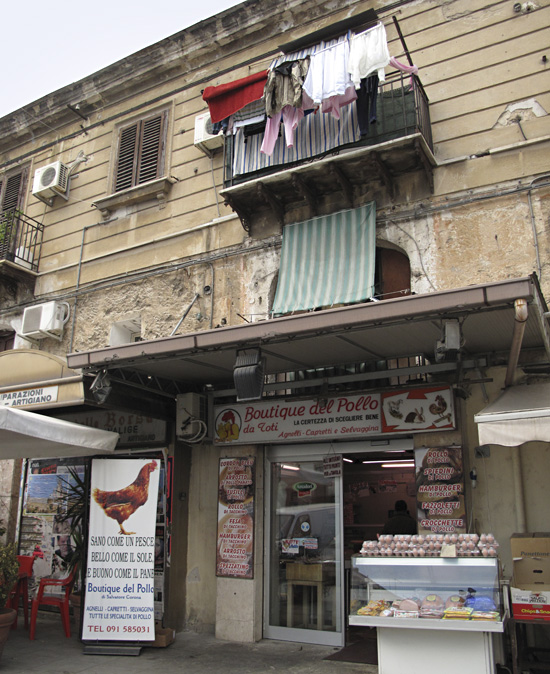
Some travelers have said they get tired of seeing “yet another church!” Right or wrong, the churches became the focus of creative and financial efforts, often over centuries of construction. These efforts yielded grand, physical monuments to artistic and architectural expression, engineering prowess, religious fervor, political power and regional positioning. Not “just another photo op”. And to this day, in the lives of a religious people, the central cathedral or duomo is the heart of the town, and the main piazza out in front is the “living room” and central gathering point. It is with this understanding that one should marvel at Italy’s remarkable cathedrals.
Palermo’s Cathedral is not far from the Palazzo Reale, the Royal Palace.
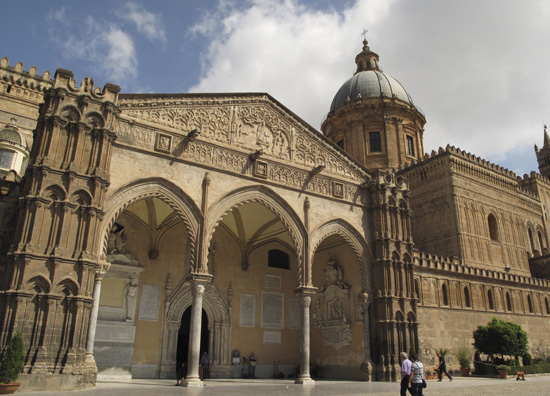
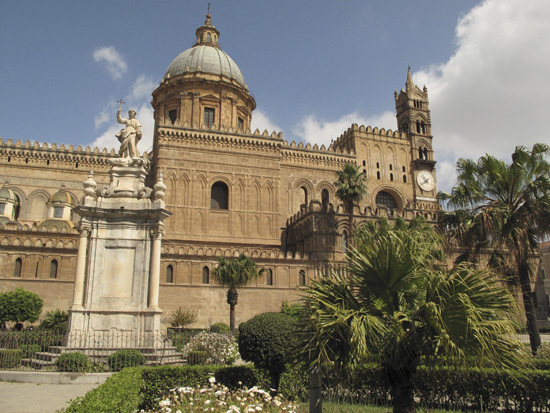
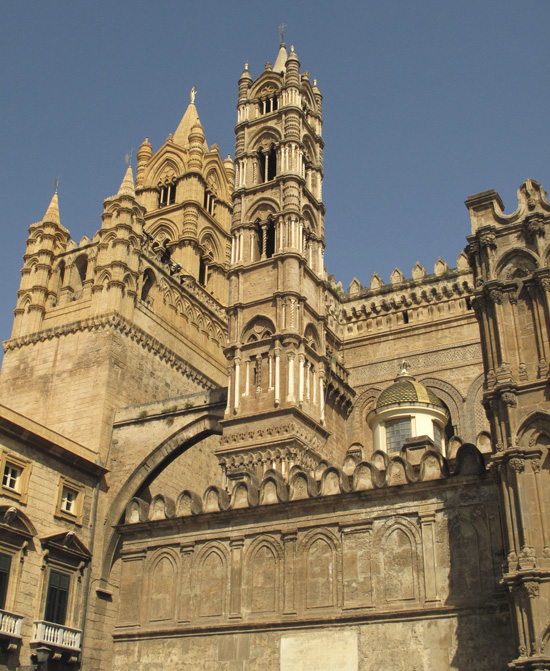
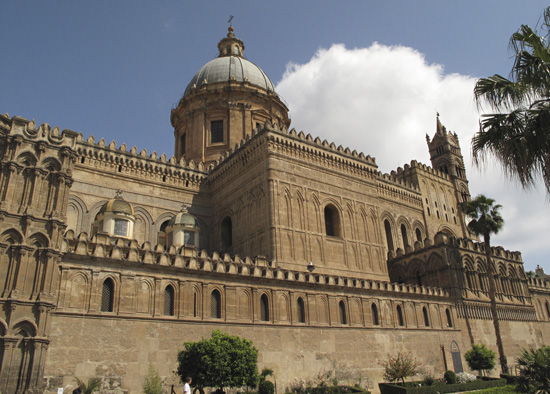
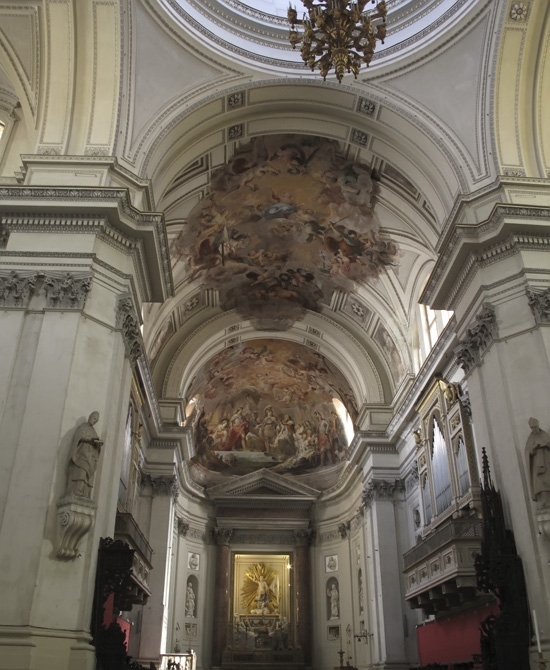
All over town there are visual details that caught my eye and stopped me. “Albergo” means “hotel”.
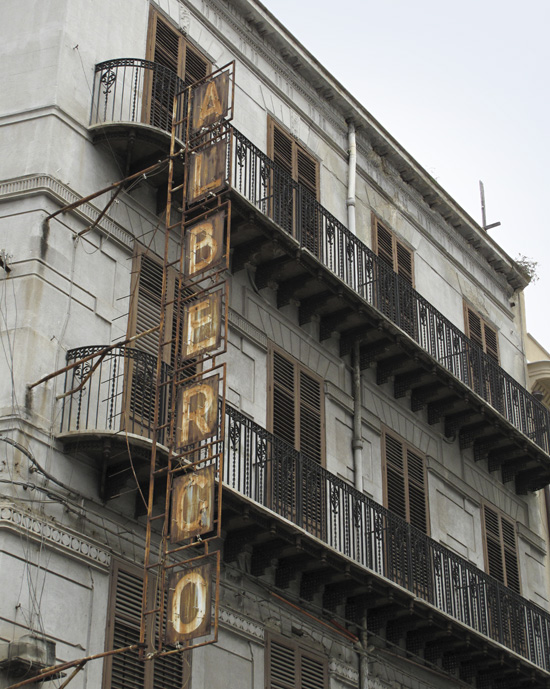
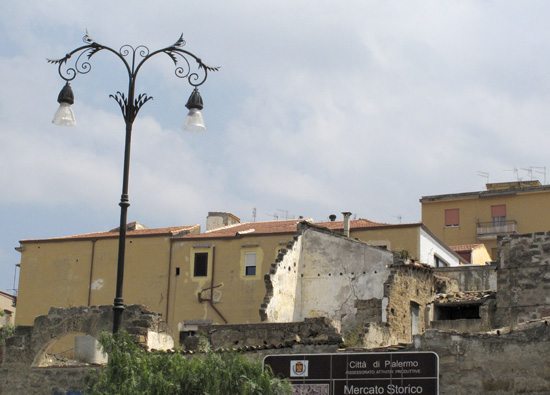
Out in front and along the wall of the Palazzo Reale, there were several groups of men intensely playing cards.
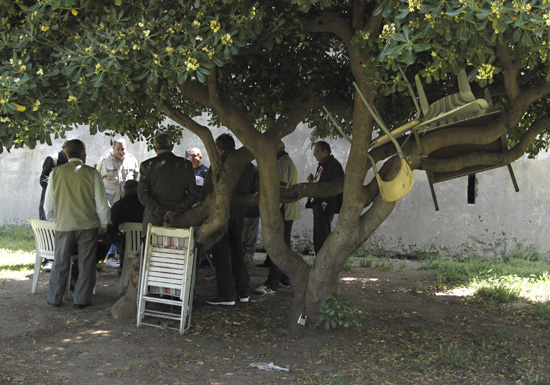
As Americans, we think that the hanging laundry is picturesque and quaint. (Granted, from a visual standpoint, I enjoy it, too.) But it’s simply functional. There are no clothes dryers here.
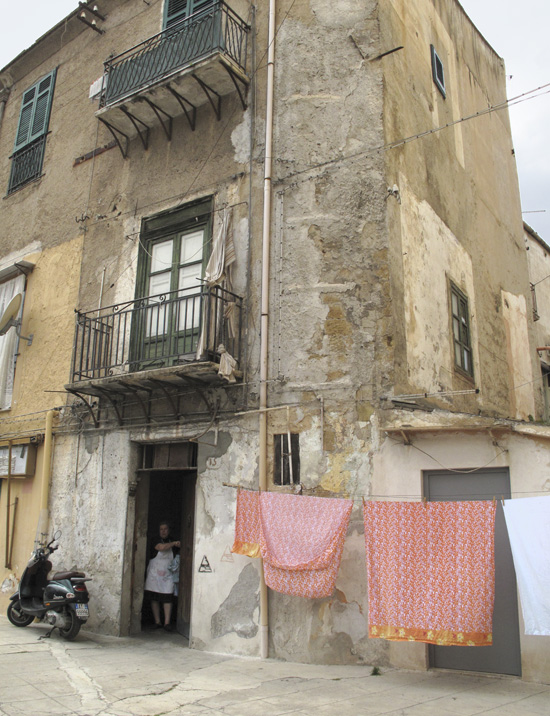
How clean will that laundry remain when hung to dry next to a construction site? But what other options are there?
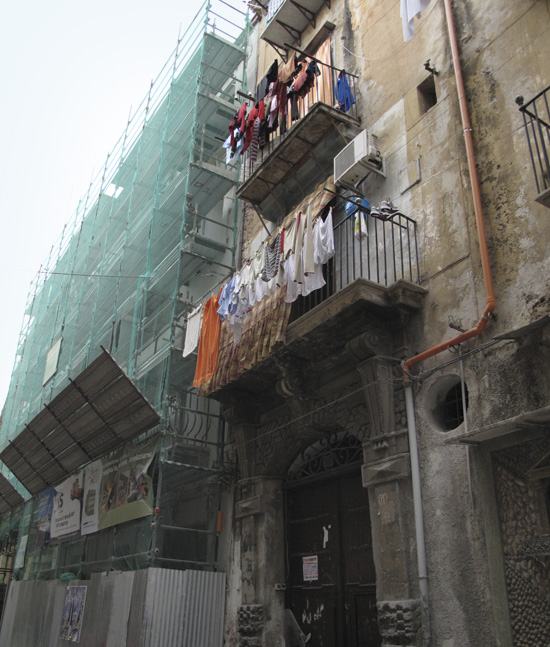
Decorated carts, Carretti de Gara, were used for weddings and parades, a variation of the simpler, traditional work carts. Tucked into a narrow alley way, I found the repository of carts-in-waiting.
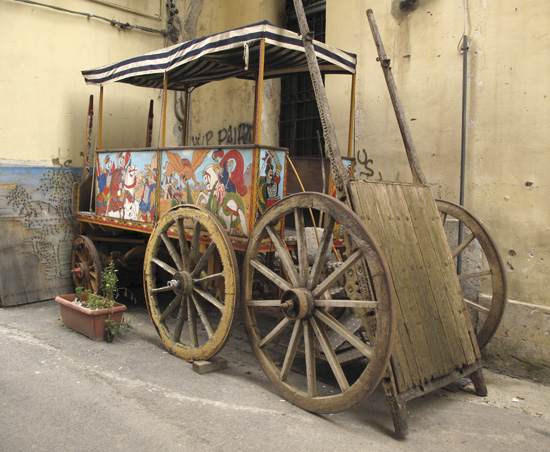
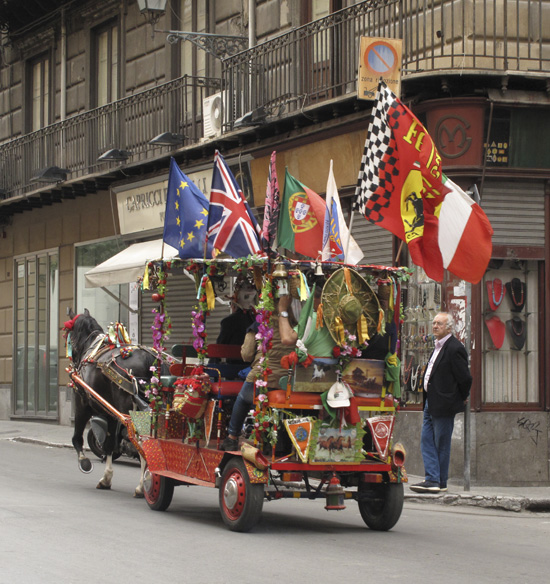
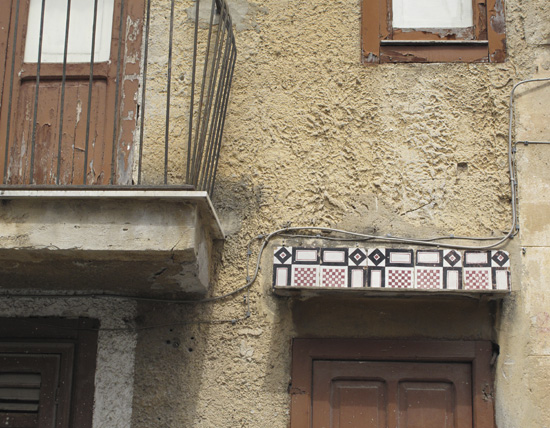
Surf the net, send a fax, buy a rooster.
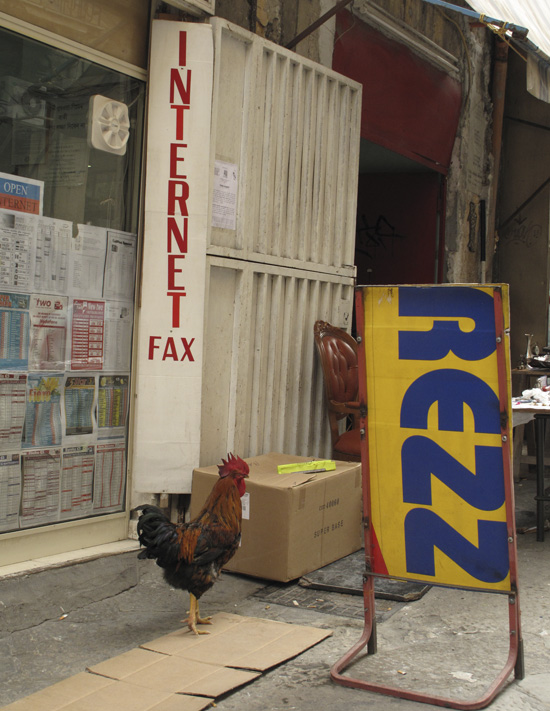
St. John of the Hermits. The red domes show up in several places around town.
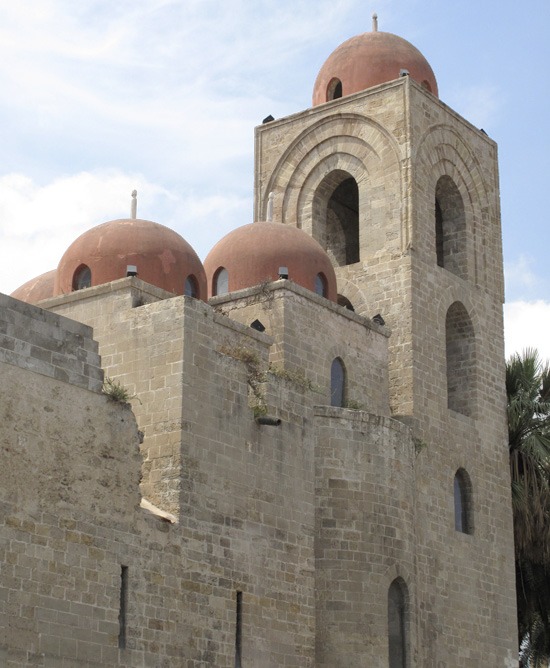
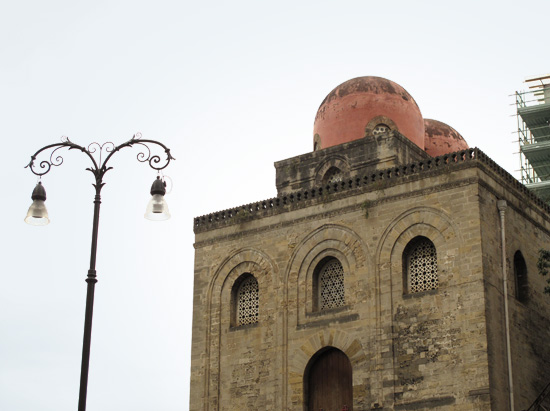
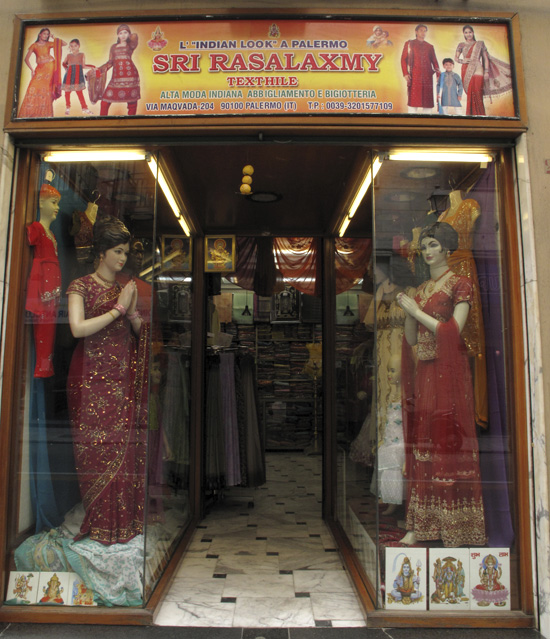
Considering most “lifts”, when present, are only big enough to carry 3 people and a vertical stack of suitcases, HOW does one move into an upper floor apartment? Moving services elevate all the household belongings on an exterior platform and go in through the balcony door.
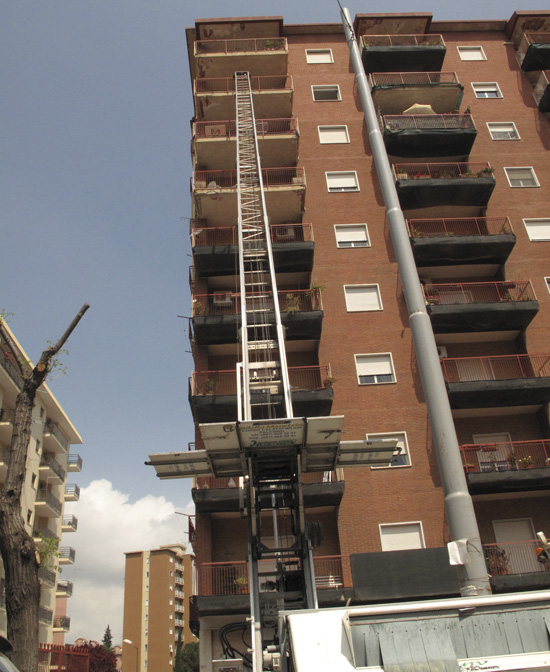
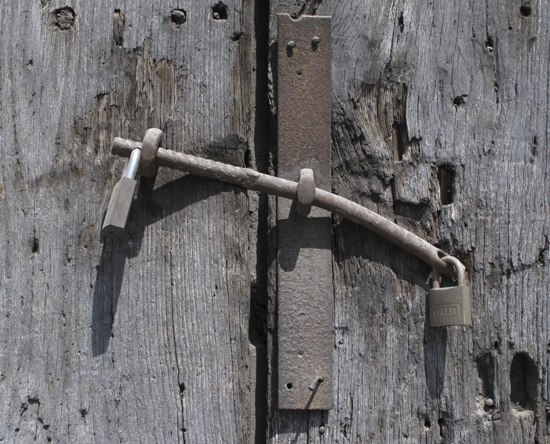
Drinks and gelato near the cathedral.

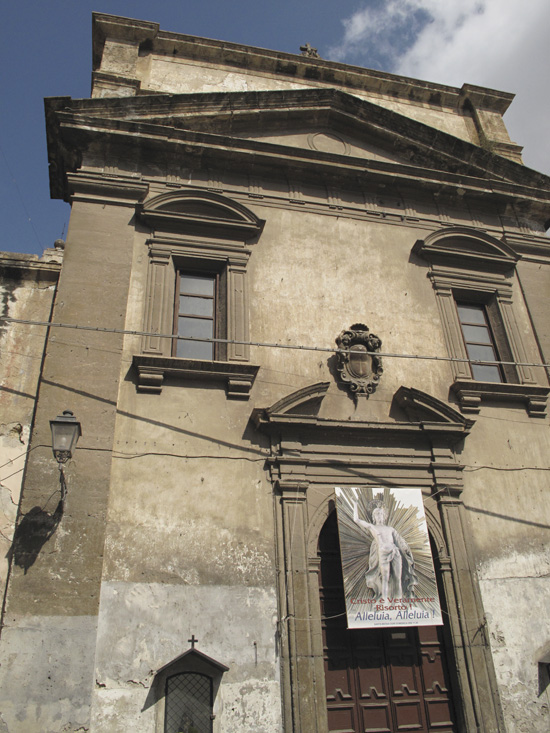
Just down the narrow road from the Capo market, I saw this grim figure in a window and was stunned. It wasn’t until I looked it up later that I learned more about the history/legend of the Beati Paoli.
From Wikipedia:
Beati Paoli is the name of a secretive sect thought to have existed in medieval Sicily. The sect resembles an order of knights fighting for the poor and the commoners. The Beati Paoli have the same connotation to many Sicilians as Robin Hood has to Northern Europeans. Today you will find traces of the Beati Paoli in the Capo district of Palermo, where a square, a street and even a restaurant bear their name. In Sicily the Beati Paoli came to be seen – both in the popular imagination and in the ideology of mafia groups – as a proto-manifestation of the Mafia.
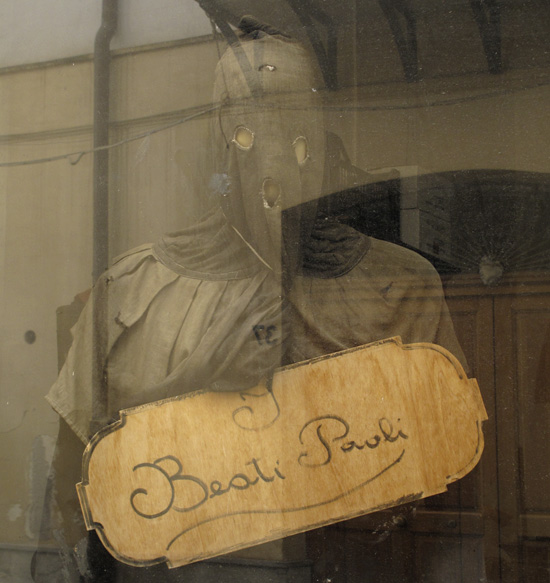
Note that this snack kiosk is named after the Beati Paoli.
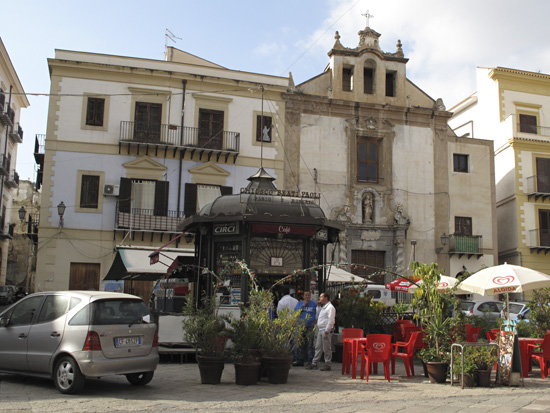
Antiques for sale near the Mercato delle Pulci, in the “restoration district”.
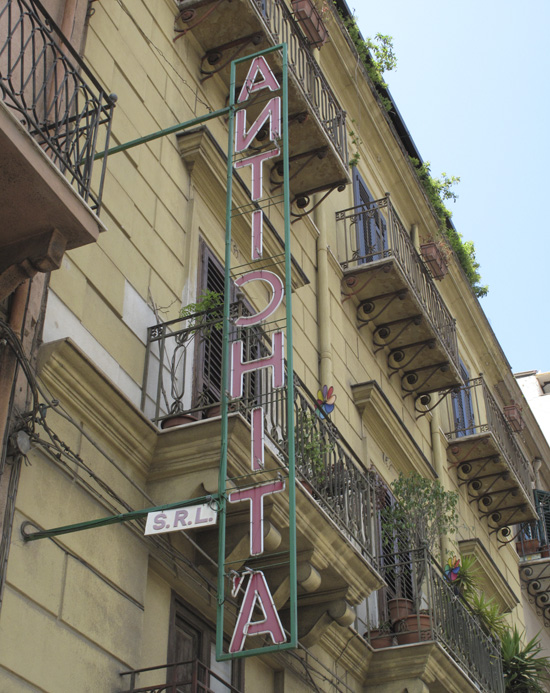
Don’t artists everywhere personalize their homes and spaces?!
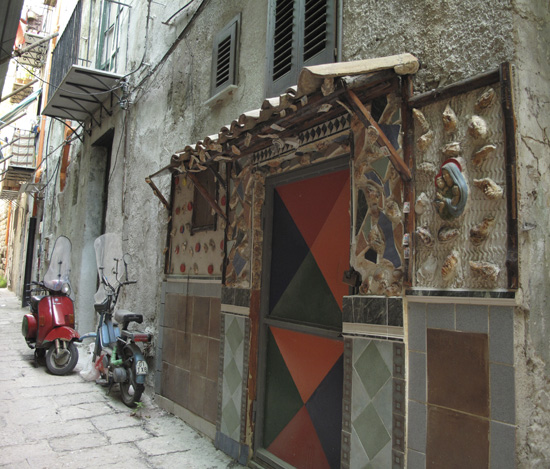
I walked up, up, up the road to the Catacombs of the Capuchin Monks, begun in the 16th century. Sections were later created for priests, lay men, women, professionals, artists and children. Photos are not allowed.
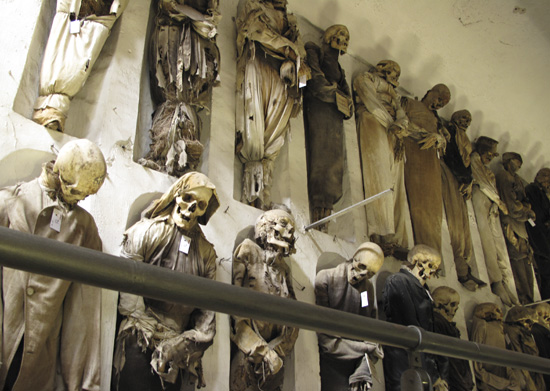
I’ve traveled in much of Italy and something I’ve seen in every region and admire greatly is the evidence of “mend and reuse”. Rather than tearing down a building and starting over, I see patches and revisions, layering up the centuries of history in a structure. Closed-up doorways and windows leave traces, and their styles tell us when it was that they were open.
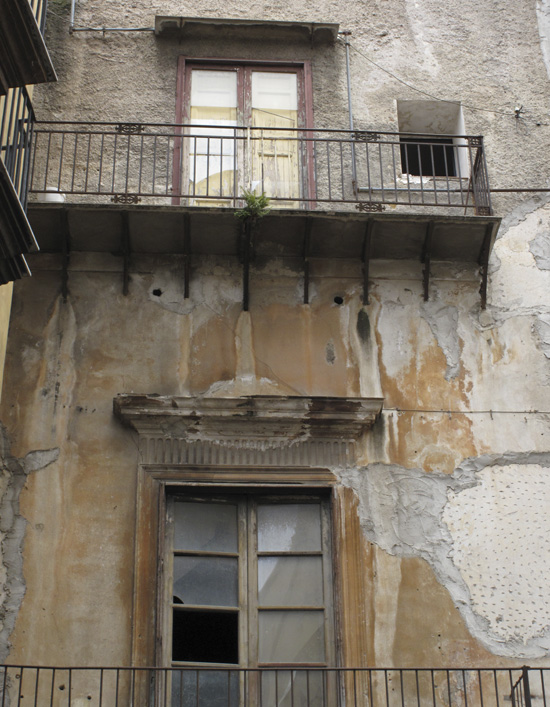
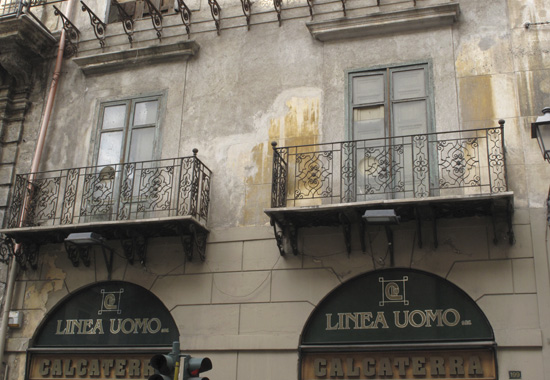
This old mattress frame is an innovative gate and doorway.
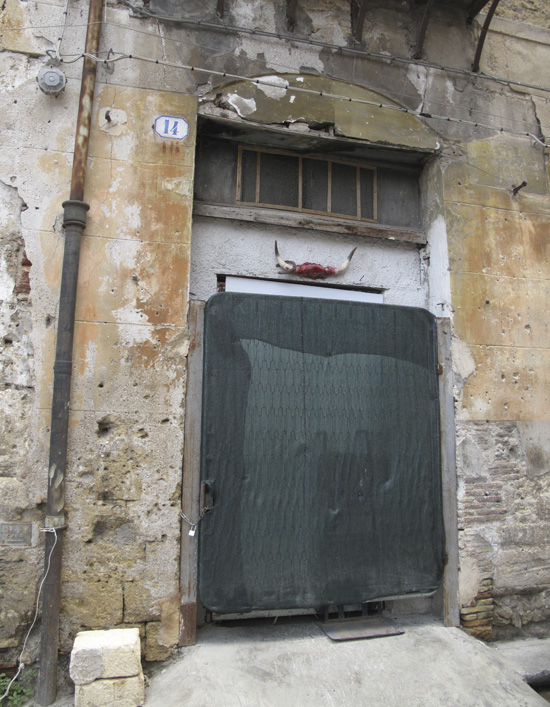
Bold, modern wayfinding signage. (Looks like the “Zapf Dingbats” font to me, but I like it.)
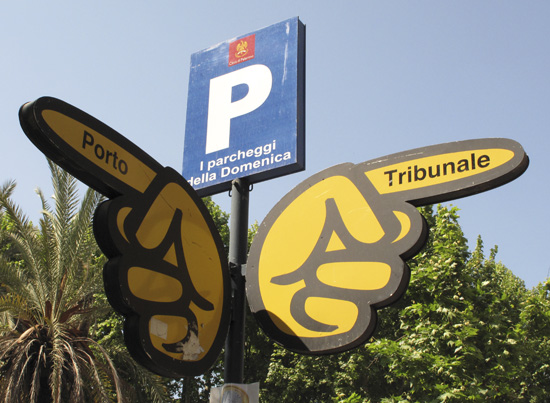
La Capella Palatina, the Palatine Chapel, quite simply, is stunning. The fineness, the modeling, the extensiveness of the mosaic-work that covers the interior astounds. (Much like the duomo of Monreale.)
From Wikipedia:
The Palatine Chapel is the royal chapel of the Norman kings of Sicily situated on the ground floor at the center of the Palazzo Reale in Palermo, southern Italy.
The chapel was commissioned by Roger II of Sicily in 1132 to be built upon an older chapel (now the crypt) constructed around 1080. It took eight years to build and many more to decorate with mosaics and fine art. The sanctuary, dedicated to Saint Peter, is reminiscent of a domed basilica. It has three apses, as is usual in Byzantine architecture, with six pointed arches (three on each side of the central nave) resting on recycled classical columns.
The mosaics of the Palatine Chapel are of unparalleled elegance… The oldest are probably those covering the ceiling, the drum, and the dome. The shimmering mosaics of the transept, presumably dating from the 1140s and attributed to Byzantine artists… The rest of the mosaics, dated to the 1160s or the 1170s, is executed in a cruder manner and feature Latin (rather than Greek) inscriptions. Probably a work of local craftsmen… This may be the only substantial passage of secular Byzantine mosaic extant today.
The chapel combines harmoniously a variety of styles: the Norman architecture and door decor, the Arabic arches and scripts adorning the roof, the Byzantine dome and mosaics. For instance, clusters of four eight-pointed stars, typical for Muslim design, are arranged on the ceiling so as to form a Christian cross.
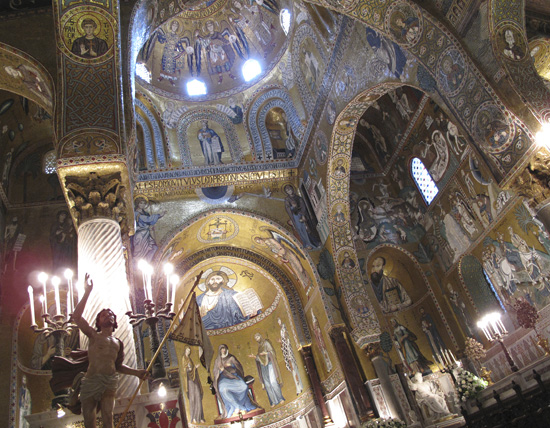
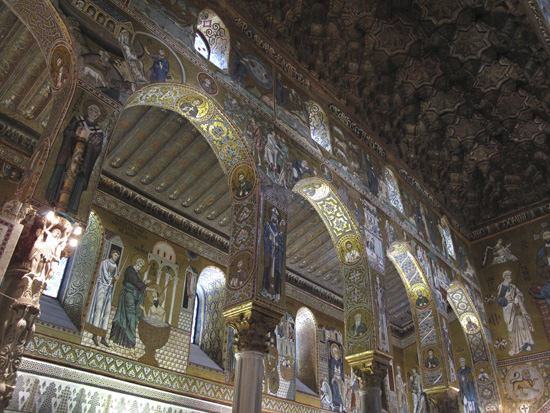
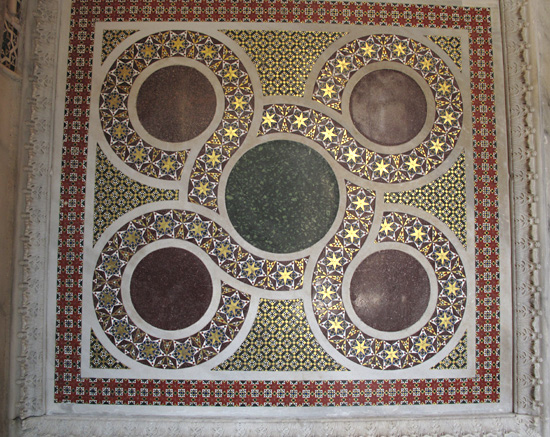
Immediately at the entrance to the Capella Palatina, with groups of foreign tourists and school kids streaming by, is a tough tom cat, sleeping wrapped around the trunk of a potted tree. He is imperturbable. Everyone watched to see that he was, indeed, still breathing. The kids were more enrapt with “Tom” than with the mosaics.
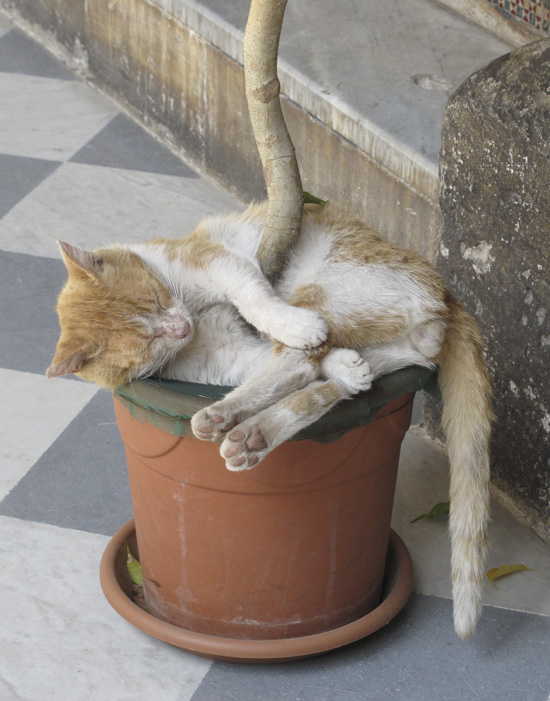
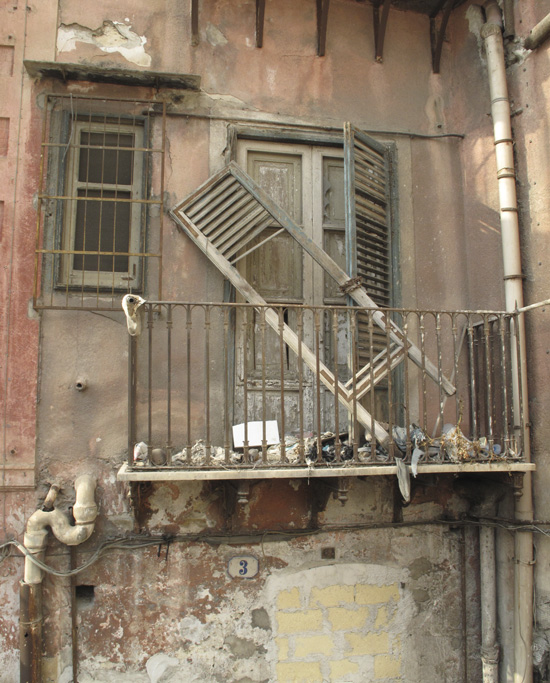
Wikipedia has a descriptive, broad overview of Palermo and its history.
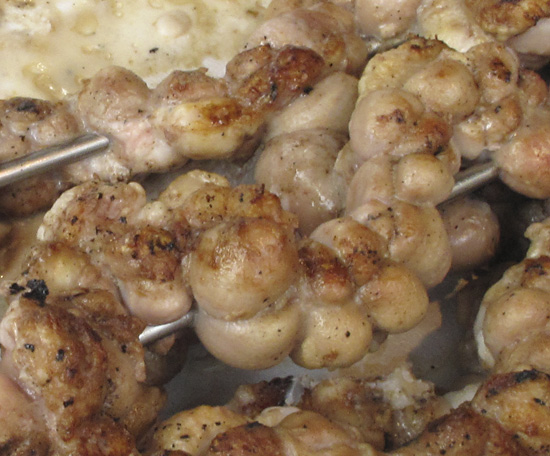
by Maureen | May 7, 2011 | Discoveries, Food!, Incredible Locations, Journal, Meals, Palermo, Quips, Shopping & Markets, Sicily, South Italy Tour
Veal guts were caught in my teeth.
Coming back from a day trip up the hill to Monreale, I got off the bus at Piazza Indipendenza and started walking home to my B&B. Off on a low side road, I saw smoke and smelled grilling meat. “Milza“? (Sicilian, cooked organ meats.) No. It was skewered veal intestines and they smelled great.
The guy had a little cart on the sidewalk in a torn up construction zone. NOT the kind of place any germophobe would eat! No running water, but rather a gallon bucket with water that had oil floating on top.
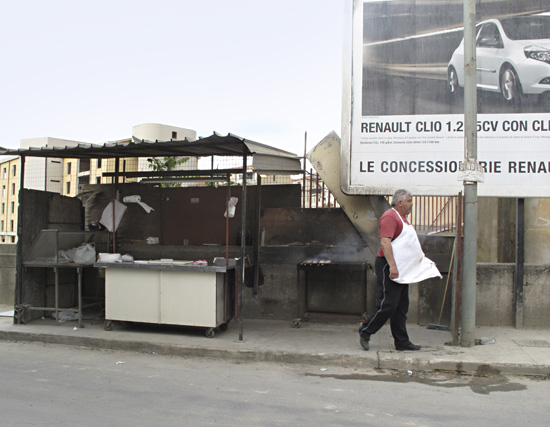
The bowels had been zig-zag plucked onto the metal skewers and partly precooked. I ordered one: “Budello… Stiglione”
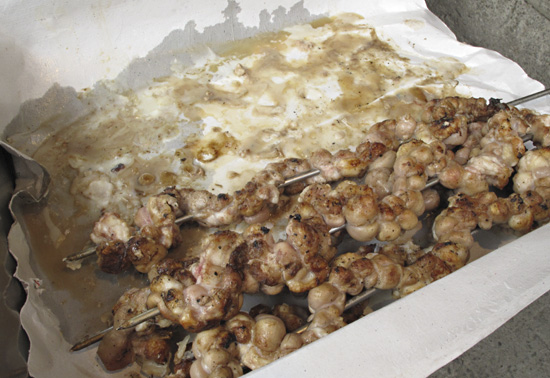

The grill was smoking hot… A good sign.
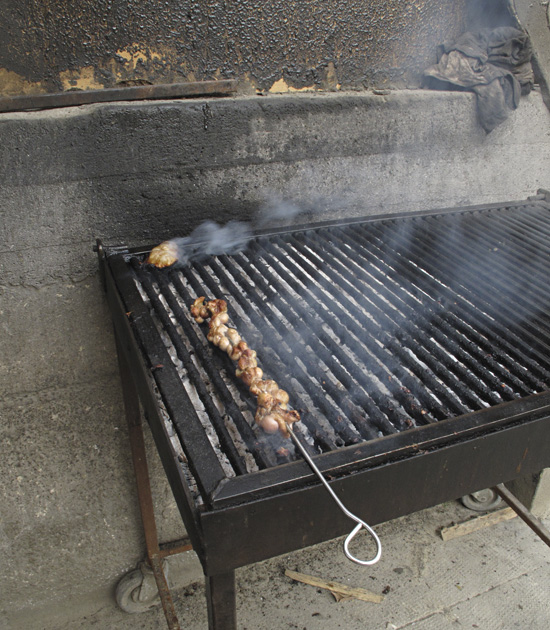
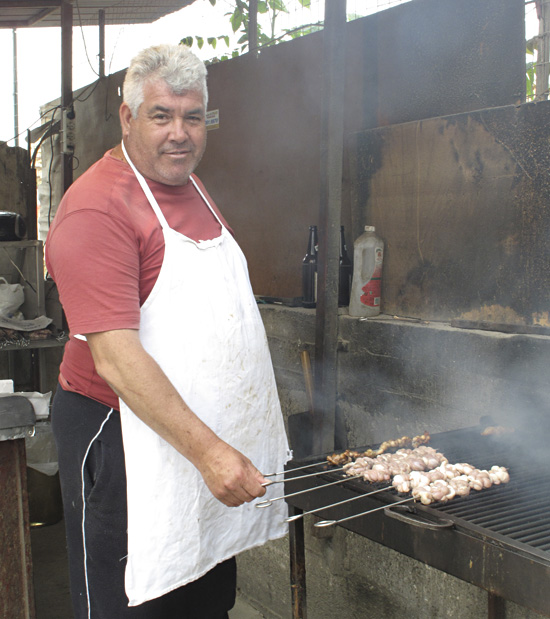
The “chef” cooked the skewered gut until it was hot through, then skimmed it off the metal rod onto a cutting board that’s been working all afternoon. He motioned me to stand aside while he cut the fatty gut into bite-sized chunks, splurting grease as he did so. He swept them with his knife onto a plastic plate, added a wedge of lemon, then showed me the tub of salt that at least a hundred hands have visited just today.
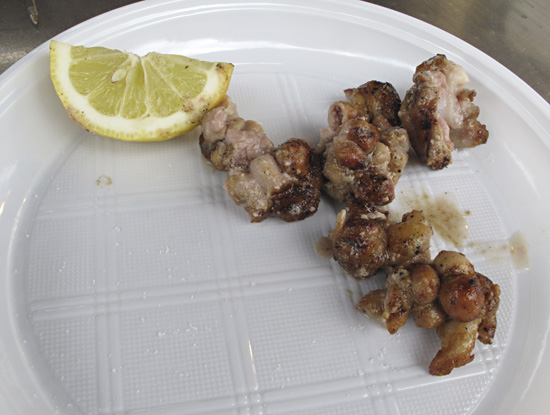
I wagered the risks, paid my 1.50 euro, then started eating with my post-public-bus fingers. A mouth experience much like fatty liver: that consistency and flavor with pockets of hot, grilled grease.
My Siciliano-Palermitano adventure left veal guts in my teeth and a smile on my face. Italy has made me far less cautious about the foods I eat, and the FDA would think I’m tempting fate by trying it all. But bring it on! Yum.
by Maureen | May 6, 2011 | Incredible Locations, Introspection, Journal, Palermo, Quips, Sicily, South Italy Tour
In pushing myself to “pack light, pack light, pack light”… in wanting to ease any worry about leaving my laptop behind in my hotel room while out exploring for the day… and in urging myself to go as “unplugged and off-the-grid” as I can stand, I left my laptop with a friend in Milan and am traveling around the south of Italy with just an iPad.
This is a great experiment for me on many counts, not the least of which is the technical limitations of the device and my ability to interact with the blogging interface. So far, I haven’t figured out how to upload photos from my iPad to the blog, but I may figure that out along the way, during my “spare time” when I’m not out wandering the little back streets or sitting in a trattoria eating spaghetti with sardines.
Rest assured, I’m gathering lots of images and also lots of experiences, meeting people every step of the way. Perhaps after I return to Milan I’ll have a marathon photo upload session and go back to add photos to my Sicilian and Pugliese posts. Stay tuned!



























































































































































